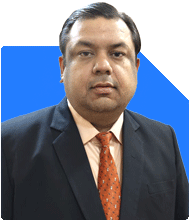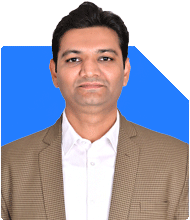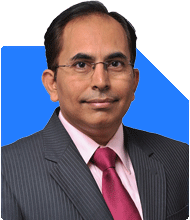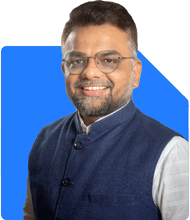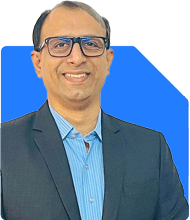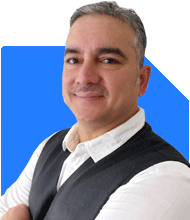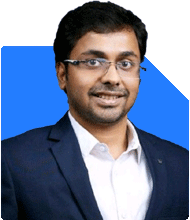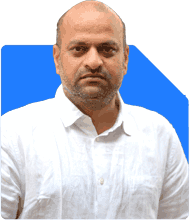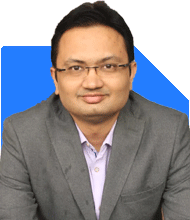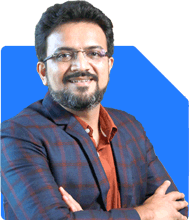Need Expert Advice?Our Gurus Can Help
Naveenn Kummar |240 Answers |Ask -Follow
Financial Planner, MF, Insurance Expert - Answered on Jan 10, 2026

You had a health insurance policy, not a savings or investment product. Health insurance premiums are paid only for protection during the policy year. They do not accumulate or become refundable like LIC, ULIP, or endowment plans. Once a policy lapses and a claim is not settled, there is no automatic refund of premiums, even if premiums were paid for several years.
In your case with Bajaj Allianz, the claim itself appears genuine, but the handling failed.
What happened
Hospitalisation claims were submitted.
The agent collected originals and they were reportedly lost in courier transit.
You escalated the issue, raised grievances, and filed an FIR.
Communication eventually stopped.
Premium payments were discontinued and the policy lapsed.
This amounts to deficiency of service, but the long time lapse has weakened the case substantially.
Why the duplicate document route mattered
When original discharge summaries and bills are lost, insurers normally accept duplicate hospital records, provided they are:
Issued by the hospital on official letterhead
Marked as certified true copies
Supported by a loss declaration or FIR
Hospitals maintain records for many years and routinely issue such duplicates. In many cases, additional bank attestation is used to strengthen authenticity and avoid insurer objections. This process keeps the claim procedurally alive. The agent should have guided and executed this reconstruction at that stage. Since this was not done in time, the insurer later had procedural grounds to disengage.
Is recovery possible after 8–10 years?
Realistically, it is very difficult, though not completely impossible. Normal customer care routes are closed. Only legal or regulatory escalation remains.
What can still be tried
Insurance Ombudsman: Cost free, but chances are low due to delay.
IRDAI grievance portal: File a detailed complaint with FIR and whatever documentation is available. Correct route, limited expectation.
Consumer Court: Possible only if negligence and harassment can be proven. Time consuming and costly. Given premiums paid were around ?1.2 lakh, effort versus outcome must be weighed carefully.
Expectation setting
Full refund of premiums is highly unlikely.
At best, there could be claim consideration or partial compensation.
Missing documents and broken follow up significantly weaken the case.
Practical advice
Do not depend on this money for current medical needs. Treat any recovery as incidental, not planned.
Q2. Home loan insurance added by HDFC. Is it mandatory or worth it?
Short answer: No, it is not mandatory.
Banks often push such insurance aggressively.
In your case with HDFC:
Home loan of about ?1 crore
Insurance of roughly ?15 lakh added
Premium loaded into the loan as a top up
EMI increased by about ?14,000
This is a bundled selling practice.
Regulatory position
A bank cannot force a borrower to buy insurance from the bank or its partner.
RBI and IRDAI allow borrowers to choose any insurer, as long as adequate risk cover exists.
Loan approval cannot legally be linked to purchasing the bank’s insurance.
Is insurance itself needed?
Yes, risk cover for a large loan is sensible. But not in this structure.
Better structure
Pure term insurance on your life
Sum assured equal to or slightly higher than the loan outstanding
Policy assigned to the bank if required
This option is cheaper, transparent, flexible, and fully under your control.
Why bank loan insurance is poor value
Single premium plans are expensive
Interest is paid on the insurance premium
Coverage often reduces while cost does not
Exit and modification are difficult
Options available
If within free look period, cancel immediately and adjust the premium against the loan.
If outside free look, review surrender terms and assess exit loss.
Take independent term insurance and formally inform the bank. They cannot reject valid alternate cover.
If time permits, explore nationalised banks, which are often more flexible on insurance conditions.
Final summary
The health insurance claim issue is emotionally justified but legally weak due to time lapse and missed procedural recovery steps.
The home loan insurance issue is correctable, and action taken early can significantly reduce long term cost.
Best regards,
Naveenn Kummar, BE, MBA, QPFP
Chief Financial Planner | AMFI Registered MFD
https://members.networkfp.com/member/naveenkumarreddy-vadula-chennai
Ramalingam Kalirajan | Answer |Ask -Follow
Mutual Funds, Financial Planning Expert - Answered on Jan 09, 2026

Your intent reflects responsibility towards retirement stability.
Your SIP commitment shows consistency and control.
You are thinking at the right time.
» Your current age and time horizon
– You are 57 years old today.
– Your remaining accumulation phase is short.
– You plan investments for three more years.
– This is a critical transition phase.
– Capital safety becomes very important now.
– Growth should support retirement income.
– Risk exposure must stay controlled.
» Understanding your return expectation
– You expect 10 to 12 percent yield.
– This is reasonable with balance.
– It needs proper asset mix.
– It cannot rely on aggressive equity.
– Volatility must remain manageable.
– Short-term market shocks should be limited.
» Monthly investment commitment assessment
– Monthly SIP amount is Rs.15000.
– Annual contribution remains comfortable.
– This avoids financial pressure.
– Consistency matters more than size.
– Discipline creates better outcomes.
– This fits well with your age.
» Risk capacity versus risk tolerance
– Risk capacity reduces after 55.
– Risk tolerance also changes with age.
– You prefer stability over excitement.
– This is healthy thinking.
– Retirement planning needs calm returns.
– Sharp falls disturb peace.
» Asset allocation philosophy
– Asset allocation drives most returns.
– Selection matters less than mix.
– Balanced exposure reduces stress.
– Equity gives growth support.
– Debt gives stability and predictability.
– Hybrid approach suits your profile.
» Recommended asset mix direction
– Equity allocation should stay moderate.
– Avoid high volatility segments.
– Prefer quality focused strategies.
– Debt portion should provide stability.
– Credit risk must be limited.
– Liquidity should be sufficient.
» Equity component guidance
– Equity exposure supports inflation protection.
– Choose diversified actively managed funds.
– Avoid thematic concentration.
– Avoid sector heavy exposure.
– Avoid momentum driven strategies.
– Stability matters more than chasing returns.
» Why actively managed funds help
– Markets change often.
– Index funds follow markets blindly.
– They fall fully during downturns.
– No downside protection exists.
– Active funds adjust portfolios.
– Fund managers reduce risk exposure.
– They protect capital during stress.
– This matters near retirement.
» Why index funds are unsuitable now
– Index funds mirror market falls.
– No flexibility during corrections.
– Drawdowns can be sharp.
– Recovery time may exceed horizon.
– Short timeframes need protection.
– Active funds offer risk control.
» Debt component guidance
– Debt brings stability to portfolio.
– It reduces overall volatility.
– It supports predictable returns.
– Credit quality must remain high.
– Avoid aggressive credit strategies.
– Avoid long duration exposure.
» Role of hybrid funds
– Hybrid funds balance growth and safety.
– They adjust equity exposure dynamically.
– They reduce emotional stress.
– Suitable for three to five years.
– They smooth market volatility.
– They suit retirement focused investors.
» SIP structure and discipline
– Continue SIP for full three years.
– Avoid stopping during volatility.
– Markets reward patience.
– SIP averages purchase cost.
– Timing the market is unnecessary.
– Discipline is your strongest asset.
» Portfolio review frequency
– Review portfolio once every year.
– Avoid frequent changes.
– Let compounding work silently.
– React only to major life changes.
– Ignore daily market noise.
» Rebalancing approach
– Rebalance annually if needed.
– Shift gains to safer assets.
– Protect accumulated value.
– Avoid emotional decisions.
– Follow predefined allocation.
» Liquidity planning before retirement
– Maintain emergency funds separately.
– Cover six to nine months expenses.
– Keep money easily accessible.
– Do not mix emergency money.
– This protects investment discipline.
» Tax efficiency awareness
– Equity funds have capital gains tax.
– LTCG above Rs.1.25 lakh attracts tax.
– Tax rate is 12.5 percent.
– STCG attracts 20 percent tax.
– Debt funds follow slab taxation.
– Holding period planning matters.
» Withdrawal planning mindset
– Avoid lump sum withdrawal at retirement.
– Gradual withdrawal reduces risk.
– Market timing risk reduces.
– Tax impact spreads out.
– Income becomes smoother.
» Post retirement transition planning
– Shift gradually to lower risk assets.
– Do not exit equity suddenly.
– Allow some growth exposure.
– This supports longer retirement.
» Inflation risk consideration
– Inflation erodes purchasing power.
– Fixed income alone may struggle.
– Moderate equity protects future value.
– Balance is key.
» Behavioural discipline importance
– Emotional decisions destroy returns.
– Fear during falls causes loss.
– Greed during rallies increases risk.
– Stick to defined plan.
– Simplicity brings success.
» Role of regular fund route
– Regular funds provide ongoing guidance.
– Monitoring becomes systematic.
– Portfolio discipline improves.
– Behavioral support is available.
– Review discussions remain structured.
» Why direct funds may not suit
– Direct funds lack handholding.
– No professional review support.
– Emotional decisions increase risk.
– Errors become costly near retirement.
– Regular route supports discipline.
» Risk management beyond investments
– Ensure adequate health insurance.
– Medical inflation is high.
– Avoid dipping into investments.
– Protect retirement corpus.
» Income planning perspective
– Retirement income needs certainty.
– Capital preservation becomes priority.
– Growth supports longevity risk.
– Balance both carefully.
» Avoiding unsuitable options
– Avoid aggressive equity strategies.
– Avoid leverage products.
– Avoid speculative instruments.
– Avoid complex structures.
– Simplicity wins long term.
» Expectations management
– Returns may vary yearly.
– Short-term fluctuations are normal.
– Focus on long-term average.
– Avoid comparison with others.
» Psychological comfort assessment
– Sleep quality matters.
– Peace matters more than extra return.
– Stable portfolio gives confidence.
– Confidence improves decision quality.
» Monitoring retirement readiness
– Track corpus growth yearly.
– Align with retirement expenses.
– Adjust contributions if possible.
– Stay flexible.
» Role of spouse involvement
– Discuss plan with spouse.
– Joint clarity improves discipline.
– Shared understanding reduces stress.
» Succession and nomination
– Ensure nominations are updated.
– Keep records organized.
– Inform family members.
– This avoids future complications.
» Final Insights
– Your approach is thoughtful and timely.
– Monthly SIP is appropriate.
– Moderate growth with safety is realistic.
– Balanced and hybrid strategies suit you.
– Active management offers protection.
– Discipline will decide outcomes.
– Stay invested with patience.
– Retirement confidence will improve steadily.
Best Regards,
K. Ramalingam, MBA, CFP,
Chief Financial Planner,
www.holisticinvestment.in
https://www.youtube.com/@HolisticInvestment
Vipul Bhavsar | Answer |Ask -Follow
Tax Expert - Answered on Jan 08, 2026

I trust you have cross checked the AIS and TIS before filing Return of Income. From this year, Income Tax has purposefully not processed returns where there is discrepency evident from the details filed in the Return and than those details available in AIS TIS.
However, if there is no such case, you must relax and wait for Income Tax to process the Returns. Have patience.
Regards,
Vipul Bhavsar
Chartered Accountant
www.capitalca.in
Ramalingam Kalirajan | Answer |Ask -Follow
Mutual Funds, Financial Planning Expert - Answered on Jan 08, 2026

– This can be your MFD or online MF platform.
– They can show unrealised capital gains.
– They can show taxable gains before redemption.
– They can show available units for redemption.
– They can show remaining LTCG exemption limit.
– This data is scheme-wise and date-wise.
– It avoids manual calculation errors.
– It helps plan redemptions tax efficiently.
Best Regards,
K. Ramalingam, MBA, CFP,
Chief Financial Planner,
www.holisticinvestment.in
https://www.youtube.com/@HolisticInvestment
Samraat Jadhav |2537 Answers |Ask -Follow
Stock Market Expert - Answered on Jan 08, 2026
Samraat Jadhav |2537 Answers |Ask -Follow
Stock Market Expert - Answered on Jan 08, 2026

Ramalingam Kalirajan | Answer |Ask -Follow
Mutual Funds, Financial Planning Expert - Answered on Jan 08, 2026

Ten years of consistency builds strong financial character.
Your awareness about costs shows maturity and responsibility.
Your corpus reflects commitment, not luck.
» Current Situation Assessment
– You started mutual funds in 2015.
– All holdings are in regular plans.
– The consolidated value is around Rs.16 lakh.
– You are worried about ongoing commissions.
– You are considering a shift to direct plans.
– You want tax efficiency and clarity.
» Understanding Regular Plans Clearly
– Regular plans include distributor support.
– Commissions are paid from fund expenses.
– These costs reduce returns gradually.
– The impact grows over long periods.
– This concern is valid and practical.
» Important Reality About Direct Plans
– Direct plans remove distributor commissions.
– Expense ratios appear lower.
– Returns look higher on paper.
– However, hidden risks exist.
– Behavioural mistakes rise without guidance.
– Panic selling becomes common.
– Asset allocation discipline often breaks.
– Portfolio drift happens silently.
– Tax timing errors increase.
– Rebalancing is frequently ignored.
» Value of Regular Plans With CFP Support
– Regular plans provide ongoing supervision.
– A Certified Financial Planner adds structure.
– Emotions are managed professionally.
– Risk is aligned with life goals.
– Tax decisions are handled carefully.
– Rebalancing is done systematically.
– Long-term discipline is protected.
– Cost is exchanged for clarity.
– Returns become more predictable.
» Why Sudden Conversion Needs Caution
– Regular to direct conversion needs redemption.
– Redemption triggers capital gains tax.
– Tax impact depends on holding period.
– Equity funds follow different rules.
– Debt funds follow slab taxation.
– Timing mistakes can destroy value.
» Equity Fund Taxation Impact
– Long-term holding gives lower tax.
– Gains above Rs.1.25 lakh face tax.
– The rate is 12.5 percent.
– Short-term gains face higher tax.
– The rate is 20 percent.
– Unplanned selling increases tax outgo.
» Debt Fund Taxation Impact
– Debt fund gains follow slab rates.
– Holding period does not reduce tax.
– Redemption increases taxable income.
– This affects surcharge also.
– Planning becomes extremely important.
» Smart Strategy Instead of Full Exit
– Avoid full redemption at once.
– Do not chase lower expense blindly.
– Protect compounding first.
– Tax efficiency matters more than costs.
– Behavioural control has strong value.
» Practical Transition Approach
– Stop SIPs in existing regular plans.
– Keep existing units untouched initially.
– Allow gains to mature further.
– Reduce tax impact gradually.
– Review each fund category separately.
» Gradual Switch With Tax Control
– Redeem only tax-efficient portions.
– Use long-term capital gains exemption wisely.
– Spread redemptions across financial years.
– Avoid crossing higher tax slabs.
– Maintain market exposure continuously.
» Same AMC Direct Option Analysis
– Direct plans exist within same AMC.
– Portfolio strategy remains identical.
– Only cost structure changes.
– However, oversight disappears.
– Self-review discipline becomes essential.
» Behavioural Risk Evaluation
– Market corrections test patience.
– News creates fear quickly.
– Without guidance, selling increases.
– Re-entry happens late.
– Losses become permanent.
» Monitoring Responsibility In Direct Plans
– You must track performance quarterly.
– Asset allocation needs strict control.
– Risk profile must be reviewed yearly.
– Tax harvesting requires attention.
– Documentation responsibility increases.
» Why Cost Saving Alone Is Incomplete
– Expense ratio difference looks attractive.
– Behavioural loss often exceeds savings.
– Wrong timing damages returns.
– Emotional decisions cost more.
» Role of Active Fund Management
– Active funds adjust to market changes.
– Fund managers manage volatility.
– Stock selection adds value.
– Risk control improves consistency.
– Suitable for Indian markets.
» Why Index Funds Are Avoided
– Index funds follow markets blindly.
– They cannot protect during downturns.
– No downside risk management exists.
– Volatility remains fully exposed.
– Active funds provide flexibility.
» Portfolio Diversification Review
– Ensure exposure across market segments.
– Balance risk and stability.
– Avoid over concentration.
– Review overlap between funds.
– Maintain long-term orientation.
» Other Investment Options Perspective
– Mutual funds remain core wealth builders.
– Avoid chasing short-term products.
– Liquidity and tax efficiency matter.
– Alignment with life goals is critical.
» Tax Planning Integration
– Capital gains planning must align yearly.
– Avoid unnecessary redemptions.
– Use exemptions carefully.
– Maintain clean records.
– Plan exits during lower income years.
» Decision Framework Summary
– Cost matters but discipline matters more.
– Tax planning protects compounding.
– Behavioural control improves outcomes.
– Professional oversight adds value.
» Balanced Recommendation Approach
– Do not rush into direct conversion.
– Evaluate professional support value.
– Consider partial transition only.
– Protect long-term strategy always.
» Finally
– Your awareness shows financial maturity.
– Your journey deserves structured protection.
– Wealth grows best with discipline.
– Costs should be managed thoughtfully.
– Guidance often saves more than fees.
Best Regards,
K. Ramalingam, MBA, CFP,
Chief Financial Planner,
www.holisticinvestment.in
https://www.youtube.com/@HolisticInvestment
Reetika Sharma |481 Answers |Ask -Follow
Financial Planner, MF and Insurance Expert - Answered on Jan 07, 2026

As the shares were unlisted on 31st Jan, 2018, you have to calculate cost of acquisition considering the following formula:
Cost of acquisition = Actual purchase price * (CII of FY 2017-2018) / CII of your purchase year)
The outcome will be deducted from current value to get the actual gain you have.
Let me know if you need more help.
Best Regards,
Reetika Sharma, Certified Financial Planner
https://www.instagram.com/cfpreetika/
Reetika Sharma |481 Answers |Ask -Follow
Financial Planner, MF and Insurance Expert - Answered on Jan 07, 2026

As you are NRI and looking for an income stream in near future, you have limited options.
- go for NRE fixed deposits which has low risk and provides 6-7% return
- or go for debt mutual funds with less risk and better returns than FD
For long term, continue investing in NPS.
Let me know if you need more help.
Best Regards,
Reetika Sharma, Certified Financial Planner
https://www.instagram.com/cfpreetika/
Reetika Sharma |481 Answers |Ask -Follow
Financial Planner, MF and Insurance Expert - Answered on Jan 07, 2026

I am sorry but plans like this doesn't give much benefit and one should never opt for such plans.
It is better for you to surrender this policy now rather than dragging this loss for another 20 years.
You can easily get more returns in simple FD and more than double if you choose mutual funds investment.
Your exact maturity value will be told by LIC office but you will definitely lose more than 15% on what you have paid.
But on a brighter side, surrendering and reinvesting the same in mutual funds with minimum 12% return will vanish your losses in just 2-3 years.
Hence, practical approach is to close this policy.
Let me know if you need more help.
Best Regards,
Reetika Sharma, Certified Financial Planner
https://www.instagram.com/cfpreetika/
Reetika Sharma |481 Answers |Ask -Follow
Financial Planner, MF and Insurance Expert - Answered on Jan 07, 2026

If the portfolio generates 12% annual return, you can withdraw 60,000 per month (inflation adjusted) and it will fund you forever and leave a huge legacy for your family.
However, you can tell me your withdrawal requirements for me to guide you in a better way.
Let me know if you need more help.
Best Regards,
Reetika Sharma, Certified Financial Planner
https://www.instagram.com/cfpreetika/
Ulhas Joshi |282 Answers |Ask -Follow
Mutual Fund Expert - Answered on Jan 07, 2026

Reetika Sharma |481 Answers |Ask -Follow
Financial Planner, MF and Insurance Expert - Answered on Jan 07, 2026

Investing in mutual funds and doing SWP to fund expenses is a great idea. If done right, 1 crore can fund you forever (inflation adjusted).
However there is no single fund to put your entire money. Take a professional's help to invest into a mix of debt and equity funds to get a minimum return of 12% per annum. This way, you will be able to beat inflation and increase your annual withdrawal.
Hence do consult a professional Certified Financial Planner - a CFP who can guide you with exact funds to invest in keeping in mind your age, requirements, financial goals and risk profile. A CFP periodically reviews your portfolio and suggest any amendments to be made, if required.
Let me know if you need more help.
Best Regards,
Reetika Sharma, Certified Financial Planner
https://www.instagram.com/cfpreetika/
Reetika Sharma |481 Answers |Ask -Follow
Financial Planner, MF and Insurance Expert - Answered on Jan 07, 2026

Investing in gold is a good idea. But investing only in gold is not.
One should not have more than 15% gold in his portfolio.
There are many good funds out there to invest in gold, ICICI Gold Fund of Fund, or HDFC Gold fund. Choose either.
Or if you have a demat, can consider investing in Gold ETFs for long term.
However avoid investing large amount at once in gold. Always consider a professional advisor before making such investment.
Let me know if you need more help.
Best Regards,
Reetika Sharma, Certified Financial Planner
https://www.instagram.com/cfpreetika/
Ramalingam Kalirajan | Answer |Ask -Follow
Mutual Funds, Financial Planning Expert - Answered on Jan 07, 2026

Recognising the problem early is a big strength.
You can recover with discipline and patience.
Your situation is manageable.
» Your current situation clearly
– Age is 41 years.
– Married with two children.
– One child is two years old.
– One child is thirteen years old.
– Monthly salary is around Rs 52,000.
» Loan position understanding
– Total loan is around Rs 6 lakh.
– EMI is around Rs 30,000.
– Loan tenure is three years.
– EMI consumes a big income portion.
» First important reassurance
– This is not a permanent problem.
– This is a cash flow mismatch.
– With structure, it can be corrected.
– Panic will only worsen things.
» Immediate risk areas to control
– EMI takes more than half salary.
– Household expenses may be stressed.
– Emergency savings may be low.
– Any income break can hurt badly.
» Priority order must change now
– Survival comes first.
– Debt reduction comes next.
– Savings come later.
– Investments can wait temporarily.
» First step is expense control
– Track every rupee spent monthly.
– Cut non-essential expenses immediately.
– Pause discretionary spending fully.
– Lifestyle adjustment is temporary.
» Suggested expense discipline approach
– Fix a strict monthly budget.
– Separate needs from wants clearly.
– Avoid credit card usage.
– Pay only cash wherever possible.
» EMI burden needs urgent attention
– EMI at this level is heavy.
– Cash flow stress will continue.
– Relief must be created.
– Options exist here.
» Option one: Loan restructuring
– Speak to your lender immediately.
– Ask for tenure extension.
– EMI may reduce significantly.
– Total interest may increase, but relief matters.
» Option two: Balance transfer
– Check lower interest options.
– Longer tenure reduces EMI pressure.
– Do not take top-up loans.
– Only restructure existing loan.
» Option three: Partial prepayment
– Any bonus or extra income helps.
– Even small prepayments reduce stress.
– Focus on principal reduction.
– Avoid new liabilities completely.
» Emergency fund is critical
– Even Rs 20,000 buffer helps.
– Build slowly after EMI relief.
– Keep money liquid.
– This avoids fresh borrowing.
» Children responsibilities reality check
– Education costs will rise.
– Avoid borrowing for lifestyle.
– Future loans must be planned.
– Debt freedom is foundation for children’s security.
» Should you invest now
– Pause investments temporarily.
– Clearing debt is best return now.
– Mental peace improves drastically.
– Restart investing after stability.
» Role of spouse and family support
– Discuss situation openly with spouse.
– Align expectations together.
– Emotional support matters.
– Joint discipline gives faster recovery.
» Income improvement efforts
– Explore additional income skills.
– Weekend or part-time work helps.
– Skill upgrade improves long-term prospects.
– Even small increments matter.
» What to strictly avoid now
– No new loans.
– No credit card revolving balance.
– No informal borrowing.
– No risky investment ideas.
» Psychological discipline advice
– Debt recovery is slow, not instant.
– Do not compare with others.
– Focus on monthly progress.
– Celebrate small wins.
» Three-year outlook if disciplined
– Loan can be fully cleared.
– Cash flow becomes positive.
– Stress reduces significantly.
– Savings can restart confidently.
» After debt is cleared
– Build emergency fund first.
– Then start child education planning.
– Then resume retirement savings.
– Step-by-step growth is safe.
» Final Insights
Your debt is recoverable with structure.
Reduce EMI stress first.
Control expenses strictly for three years.
Avoid new borrowing completely.
With discipline, you will come out stronger.
Best Regards,
K. Ramalingam, MBA, CFP,
Chief Financial Planner,
www.holisticinvestment.in
https://www.youtube.com/@HolisticInvestment
Samraat Jadhav |2537 Answers |Ask -Follow
Stock Market Expert - Answered on Jan 07, 2026
Ramalingam Kalirajan | Answer |Ask -Follow
Mutual Funds, Financial Planning Expert - Answered on Jan 06, 2026

Your asset base is strong for your age.
Your intent to plan early shows maturity.
This gives you a real advantage.
» Your age, timeline, and responsibility snapshot
– You are 43 years old now.
– Retirement target age is 58.
– Investment horizon is fifteen years.
– Monthly household expense is Rs 1 lakh.
– Lifestyle inflation must be planned carefully.
» Core objective clarity
– Build retirement corpus, not short-term income.
– Protect purchasing power against inflation.
– Reduce stress closer to retirement.
– Maintain flexibility and liquidity.
» Current asset structure overview
– Real estate worth about Rs 1 crore.
– VPF holding around Rs 68 lakh.
– USD cash balance around Rs 30 lakh.
– Corporate bonds around Rs 3 lakh.
– Direct equity around Rs 9 lakh.
– Gold and silver ETFs are small allocations.
– Equity mutual fund exposure is still limited.
» Important observation on your asset mix
– Safety assets dominate your portfolio.
– Growth assets are underrepresented currently.
– This is common among disciplined earners.
– Growth gap must be addressed now.
» Why next fifteen years are critical
– Time is still on your side.
– Compounding works best before fifty.
– Late acceleration becomes difficult.
– Equity allocation must peak now.
» Monthly SIP amount assessment
– Rs 50,000 per month is meaningful.
– Annual investment becomes sizeable.
– Consistency matters more than market timing.
– SIP discipline will drive outcomes.
» Key risk factors to address
– Inflation risk over long retirement.
– Longevity risk beyond seventy-five.
– Career uncertainty post fifty.
– Healthcare cost escalation.
» Comforting strengths already present
– No housing EMI pressure.
– Car EMI covered by rent.
– Strong provident fund discipline.
– Foreign currency diversification exists.
» Core investment philosophy for your plan
– Growth first, stability later.
– Equity heavy till early fifties.
– Gradual risk reduction after fifty-five.
– Annual review is mandatory.
» Why equity must dominate SIP allocation
– Retirement corpus needs real growth.
– Fixed income barely beats inflation.
– Medical inflation is much higher.
– Equity absorbs long-term shocks better.
» Why actively managed equity suits you
– Markets go through cycles.
– Active funds adjust sector exposure.
– Risk management is dynamic.
– This helps during volatile phases.
» Why index-based investing is not ideal here
– Index funds remain fully invested always.
– They cannot reduce risk during overvaluations.
– They mirror market falls fully.
– Active funds provide downside control.
» SIP allocation broad structure
– Equity-oriented funds should dominate.
– Small allocation to hybrid for balance.
– Avoid over-diversification.
– Simplicity improves discipline.
» Suggested SIP allocation philosophy
– Focus on long-term compounding.
– Accept interim volatility calmly.
– Avoid thematic concentration.
– Stick to core categories.
» Equity allocation percentage guidance
– About seventy to seventy-five percent in equity.
– Balance in controlled allocation strategies.
– Avoid pure debt SIPs now.
– Debt is already sufficient elsewhere.
» Large and established company exposure
– Allocate meaningful portion here.
– This gives stability during downturns.
– Earnings visibility is higher.
– Portfolio volatility reduces.
» Mid-sized company exposure
– Allocate moderately here.
– This segment drives growth acceleration.
– Volatility is higher but manageable.
– Long horizon supports this risk.
» Smaller company exposure
– Keep allocation limited.
– High returns come with sharp falls.
– SIP helps average costs.
– Review allocation annually.
» Hybrid or balanced strategies role
– Acts as shock absorber.
– Manages volatility near market peaks.
– Useful as you cross fifty.
– Do not overweight early.
» How Rs 50,000 SIP can be structured
– Majority into equity growth categories.
– Smaller part into balanced strategies.
– No need for gold SIP now.
– Commodity exposure already exists.
» Treatment of existing equity investments
– Continue existing equity holdings.
– Avoid frequent switching.
– Add through SIPs instead.
– Let winners compound longer.
» Direct equity holdings approach
– Keep exposure limited.
– Avoid emotional trading.
– Treat as satellite allocation.
– Mutual funds should remain core.
» Corporate bonds holding view
– Size is small currently.
– No additional allocation required.
– Credit risk should remain limited.
– Focus remains on equity growth.
» VPF and retirement benefits role
– VPF already gives stability.
– It will support later retirement years.
– Do not disturb this allocation.
– Equity SIP complements this nicely.
» USD cash holding perspective
– Currency diversification is positive.
– Avoid converting fully immediately.
– Use selectively during market corrections.
– Maintain emergency buffer here.
» Real estate exposure consideration
– Already significant exposure exists.
– No additional allocation needed.
– Liquidity is low here.
– Financial assets must balance this.
» EMI and cash flow comfort
– EMI is covered by rental income.
– This is healthy cash flow management.
– Avoid new liabilities.
– Preserve surplus for SIP.
» Retirement expense estimation thinking
– Rs 1 lakh today will inflate.
– Expenses may double over years.
– Equity growth offsets this.
– Discipline protects lifestyle.
» Gradual de-risking strategy later
– Start reducing equity after fifty-three.
– Shift gains into stability gradually.
– Avoid sudden large switches.
– Market timing is unreliable.
» Behavioural discipline guidance
– Avoid stopping SIPs during crashes.
– Crashes are opportunity periods.
– Stick to asset allocation.
– Emotional control creates wealth.
» Tax efficiency awareness
– Equity mutual fund gains are taxable.
– LTCG above Rs 1.25 lakh taxed.
– STCG taxed higher.
– Holding period discipline helps.
» Portfolio review frequency
– Review once every year.
– Avoid quarterly tinkering.
– Major life events trigger review.
– Consistency beats activity.
» Insurance check reminder
– Ensure adequate term insurance.
– Health insurance must be sufficient.
– Medical costs derail plans easily.
– Protection precedes investment.
» Education and family responsibility buffer
– Keep separate savings if required.
– Do not disturb retirement SIPs.
– Goal separation avoids confusion.
– Retirement must remain sacred.
» What not to do now
– Do not chase guaranteed return products.
– Do not over-allocate to debt early.
– Do not follow tips blindly.
– Personal plan always wins.
» Mental readiness for volatility
– Equity returns are uneven yearly.
– Long-term outcome matters.
– Ignore short-term noise.
– Focus on process, not headlines.
» Alignment check of your plan
– Assets are strong already.
– SIP improves growth balance.
– Timeline is realistic.
– Execution discipline is key.
» Final Insights
Your SIP decision is timely and necessary.
Rs 50,000 monthly can meaningfully change outcomes.
Focus on equity growth while time allows.
Gradual rebalancing later will protect gains.
With discipline, retirement at fifty-eight looks achievable.
Best Regards,
K. Ramalingam, MBA, CFP,
Chief Financial Planner,
www.holisticinvestment.in
https://www.youtube.com/@HolisticInvestment
Ramalingam Kalirajan | Answer |Ask -Follow
Mutual Funds, Financial Planning Expert - Answered on Jan 06, 2026

You have built assets with patience and discipline.
This gives you strong control over retirement choices.
Your position is far stronger than you may realise.
» Your current age and life stage
– You are 54 years old.
– You are still employed.
– Retirement decision is near.
– Family responsibilities still exist.
» Family responsibilities assessment
– Wife is homemaker.
– Two daughters are studying.
– Three senior citizens need support.
– This requires stable monthly cash flow.
» Housing and living situation
– You live in your own house.
– No rent pressure exists.
– This is a big advantage.
– It reduces retirement stress greatly.
» Real estate holdings overview
– Three flats generating rental income.
– Multiple plots in Bangalore.
– Multiple plots outside Bangalore.
– Agricultural land worth around Rs 1 crore.
» Important note on real estate exposure
– Your exposure to property is very high.
– Property is illiquid by nature.
– Income depends on tenant stability.
– Capital value depends on market cycles.
» Fixed deposit holdings
– Around Rs 4 crore in fixed deposits.
– This provides stable interest income.
– Capital safety is high.
– Inflation risk exists long term.
» Retirement benefits accumulation
– Retirement corpus exceeds Rs 1 crore.
– It is still accumulating.
– This adds future safety.
– Liquidity improves post retirement.
» Mutual fund exposure
– Only Rs 5 lakh in mutual funds.
– Equity exposure is very low.
– Growth potential is underutilised.
– Inflation protection is limited.
» Pension income clarity
– SBI Life pension starts from 2027.
– This gives assured income stream.
– It supports baseline expenses.
– It improves retirement confidence.
» Current income position
– Rental income plus FD interest is Rs 3.5 lakh monthly.
– This excludes your salary.
– This is a strong recurring income.
– Cash flow strength is visible.
» Monthly expense assumption
– You did not mention exact expenses.
– Likely comfortable lifestyle in Bangalore.
– Senior care adds medical costs.
– Education expenses still ongoing.
» First big reassurance
– You are not financially weak.
– You are asset rich and income rich.
– You have multiple income sources.
– Retirement is possible with structure.
» But retirement is not only about assets
– Cash flow stability matters most.
– Inflation impact must be managed.
– Health costs will rise.
– Property concentration risk exists.
» Can you retire safely today
– From income view, yes.
– From risk balance view, some changes needed.
– From liquidity view, improvement required.
– From simplicity view, restructuring helps.
» Understanding your income sustainability
– Rental income may fluctuate.
– Vacancies can reduce income.
– Maintenance costs increase over time.
– Dependence on property income has risk.
» Fixed deposit income risks
– FD interest rates change.
– Reinvestment risk exists.
– Inflation erodes purchasing power.
– Tax reduces real returns.
» Pension income role
– Pension adds predictability.
– It supports essential expenses.
– It reduces pressure on investments.
– It is a positive anchor.
» Education responsibility planning
– Daughters’ education costs will rise.
– Higher studies may need lump sums.
– Avoid using illiquid assets suddenly.
– Plan cash availability in advance.
» Senior citizen care planning
– Medical costs can be sudden.
– Insurance may not cover everything.
– Emergency liquidity is essential.
– Avoid forced asset sales.
» Key concern area identified
– Excessive real estate concentration.
– Very low market-linked growth assets.
– High dependence on interest income.
– Complexity in asset management.
» Why too much real estate is risky
– Selling takes time.
– Prices are location dependent.
– Income is not guaranteed.
– Legal and maintenance issues arise.
» Why very low equity exposure is risky
– Inflation silently eats wealth.
– Long retirement period ahead.
– Medical inflation is high.
– Growth assets are required.
» Why simplicity matters in retirement
– Too many assets create stress.
– Monitoring becomes difficult.
– Decision fatigue increases.
– Simpler structure improves peace.
» Ideal retirement structure principle
– Stable income for expenses.
– Growth assets for inflation.
– Liquidity for emergencies.
– Reduced management burden.
» What changes are advisable now
– Gradual rebalancing is required.
– No sudden liquidation needed.
– Step-by-step approach works best.
– Emotional comfort must be preserved.
» Rebalancing real estate exposure
– You need not sell everything.
– Identify non-core plots.
– Consider phased monetisation.
– Convert part into financial assets.
» Why monetisation helps
– Improves liquidity.
– Reduces concentration risk.
– Funds education and healthcare needs.
– Simplifies estate planning.
» Fixed deposit restructuring thought
– Keep emergency buffer intact.
– Do not park everything long term.
– Ladder maturity periods.
– Maintain flexibility.
» Mutual fund allocation importance
– Increase allocation gradually.
– Use it for long-term growth.
– It beats inflation over time.
– Helps later life expenses.
» Why actively managed funds suit you
– Market conditions change often.
– Active managers adjust exposure.
– Risk management is dynamic.
– This suits retirement phase.
» Avoid common retirement mistakes
– Do not chase high guaranteed returns.
– Do not lock money permanently.
– Do not ignore inflation.
– Do not depend only on property.
» Health and insurance check
– Ensure adequate health cover.
– Consider top-up if needed.
– Medical costs rise sharply after 60.
– This protects your corpus.
» Estate and succession planning
– Multiple properties complicate inheritance.
– Clear nominations are essential.
– Will drafting is important.
– Family harmony depends on clarity.
» Emotional readiness to retire
– Financial readiness seems strong.
– Mental readiness is equally important.
– Sudden retirement can feel empty.
– A gradual transition helps.
» Option of partial retirement
– Reduce working hours.
– Continue light consulting if possible.
– Maintain mental engagement.
– Income becomes bonus.
» Impact of retiring now
– Salary loss is not critical.
– Passive income covers lifestyle.
– Time for health and family increases.
– Stress reduces significantly.
» If you retire now, conditions apply
– Expenses must remain controlled.
– Asset restructuring should begin.
– Annual review is compulsory.
– Flexibility must be retained.
» If you continue working two more years
– Retirement corpus grows further.
– Pension commencement aligns better.
– Education expenses reduce.
– Transition becomes smoother.
» No urgency-driven decision needed
– You are not forced to retire.
– You are not forced to continue.
– Choice is yours.
– That itself is success.
» Final Insights
You are financially capable of retiring now.
However, some restructuring will improve safety.
Reduce property concentration gradually.
Increase growth assets slowly.
With discipline, retirement can be comfortable and dignified.
Best Regards,
K. Ramalingam, MBA, CFP,
Chief Financial Planner,
www.holisticinvestment.in
https://www.youtube.com/@HolisticInvestment
Mihir Tanna |1093 Answers |Ask -Follow
Tax Expert - Answered on Jan 06, 2026

Further, if you transfer commercial property and acquire new residential property, you are eligible for claiming exemption in Sec 54F subject to certain conditions like on the date of sale of commercial property, you should not have more than one house property. You have to invest entire sale consideration of commercial property in construction of residential house property within 3 years of transfer of commercial property. Balance amount which can not be invested in construction before due date of filing ITR, is required to be invested in capital gain scheme account with specified bank.
As you have started construction before transferring commercial property, claiming 54F can be subject to litigation.
Mihir Tanna |1093 Answers |Ask -Follow
Tax Expert - Answered on Jan 06, 2026

Mihir Tanna |1093 Answers |Ask -Follow
Tax Expert - Answered on Jan 06, 2026

Samraat Jadhav |2537 Answers |Ask -Follow
Stock Market Expert - Answered on Jan 06, 2026

Ramalingam Kalirajan | Answer |Ask -Follow
Mutual Funds, Financial Planning Expert - Answered on Jan 06, 2026

Many people face this exact issue in India.
You are thinking correctly from a future safety view.
This can be managed calmly and systematically.
» First, understand the seriousness clearly
– Name mismatch is very common.
– Minor differences usually do not cause daily issues.
– Problems arise during large claims or inheritance.
– KYC, insurance, PF, bank claims need consistency.
» Expansion of initials versus short initials
– Aadhaar allows initials or expanded names.
– Banks often use expanded full names.
– Insurance policies prefer expanded names.
– This difference alone is usually manageable.
» Father name and surname interchange issue
– This is more sensitive than initials.
– Legal documents may treat it as mismatch.
– Succession, insurance, or PF claims may delay.
– It is better corrected early.
» From future perspective, correction is advisable
– Retirement claims involve multiple documents.
– Nominee claims need exact matching.
– Legal heirs may face stress otherwise.
– Early correction avoids future anxiety.
» Which document should become the base
– Aadhaar should ideally be the base
– It links PAN, bank, insurance, PF.
– Correct Aadhaar first, then align others.
» Should you change Aadhaar or other documents
– Usually easier to correct Aadhaar.
– Aadhaar allows name correction officially.
– Other institutions follow Aadhaar later.
– This reduces repetitive work.
» What corrections are really needed
– Decide one final correct full name format.
– Decide correct father name order.
– Keep surname placement consistent.
– Avoid initials if possible.
» Simple example of consistency
– Your full name should match everywhere.
– Father name spelling and order must match.
– Surname placement must stay same.
– One format everywhere avoids confusion.
» Aadhaar correction procedure
– Visit nearest Aadhaar Seva Kendra.
– Carry original identity proof.
– Carry address proof if needed.
– Request name and father name correction.
» Documents accepted for Aadhaar correction
– PAN card is commonly accepted.
– Passport is very strong proof.
– Voter ID also works.
– Bank passbook sometimes accepted.
» What if PAN name is correct
– Use PAN as primary proof.
– Aadhaar correction becomes easy.
– PAN is widely trusted.
– Align Aadhaar to PAN.
» Online Aadhaar correction option
– Minor spelling corrections can be online.
– Major changes require physical visit.
– Father name order changes need visit.
– Biometric verification is required.
» Time taken for Aadhaar update
– Usually 7 to 15 days.
– Status can be tracked online.
– Updated Aadhaar downloadable later.
– Physical card optional.
» After Aadhaar correction, next steps
– Update bank KYC using Aadhaar.
– Update insurance records slowly.
– Update mutual fund KYC records.
– Update PF and pension records.
» Do not rush all updates together
– Start with important accounts first.
– Bank accounts come first.
– Insurance policies next.
– Investments can follow gradually.
» Is affidavit required
– Usually not required for Aadhaar.
– Some insurers may ask affidavit.
– Simple notarised affidavit works.
– This is rare for small corrections.
» Will there be account freezing risk
– No immediate risk.
– Corrections are routine.
– Inform bank during update.
– Keep acknowledgement slips safely.
» What happens if you ignore correction
– Daily operations may continue fine.
– Claims may get delayed.
– Nominees may struggle later.
– Legal clarification may be required.
» Impact on insurance claims
– Insurers match name and identity.
– Mismatch triggers additional verification.
– Delay can stress family members.
– Prevention is better here.
» Impact on PF and retirement claims
– PF uses Aadhaar heavily now.
– Name mismatch can reject claims.
– Correction at that time is harder.
– Early correction is wise.
» Cost involved
– Aadhaar correction cost is minimal.
– Travel and time are main costs.
– No agent required.
– Avoid middlemen completely.
» Emotional reassurance
– This is not a rare problem.
– Government systems handle this daily.
– Process is structured now.
– You are acting responsibly.
» Final Insights
Yes, correction is recommended for future safety.
Start with Aadhaar correction first.
Align PAN, bank, insurance gradually.
This protects your family from future trouble.
Simple action today avoids big stress tomorrow.
Best Regards,
K. Ramalingam, MBA, CFP,
Chief Financial Planner,
www.holisticinvestment.in
https://www.youtube.com/@HolisticInvestment
Naveenn Kummar |240 Answers |Ask -Follow
Financial Planner, MF, Insurance Expert - Answered on Jan 05, 2026

Here’s why it matters:
Your employer’s policy is usually a “family floater,” meaning the total sum insured is shared by all covered members. If someone else in the family needs care, her available coverage can shrink. Having her own policy ensures she always has her own dedicated cover and won’t lose it if she changes location, job, or schooling situation.
How much cover makes sense?
For someone her age and health profile:
Aim for at least ?5 lakh as a starting sum insured. This is enough for most hospital stays and procedures without being costly in premium.
A cover of ?7.5–10 lakh gives extra peace of mind, especially if she lives in a big city with higher medical costs.
You can go higher than ?10 lakh depending on your comfort with premiums and risk tolerance.
What type of policy should it be?
Choose a standard individual health insurance policy under her name. Keep these points in mind when comparing options:
Medical inflation is real, and what seems like a high limit today might feel modest in a few years. Having a healthy cushion gives her flexibility.
Key things to check in any policy (doesn’t matter which brand):
Sum insured: Start with at least ?5–10 lakh.
Cashless hospital network: A wide network near her college or home is very useful.
Pre-existing conditions waiting period: If she has none now, look for plans that start covering complications sooner rather than later.
Day-one cover for common illnesses: Many plans offer immediate cover for standard treatments.
Affordable premium with good claim history: Price matters, but ease of claims matters more.
Tax benefit:
You can claim the premium you pay for her policy as a tax deduction under Section 80D. That softens the cost a bit.
In short, getting her own policy gives her independence, uninterrupted coverage, and a defined sum insured just for her needs. If you want, I can help you estimate what the premiums might be for different cover levels based on her city and age.
Best regards,
Naveenn Kummar, BE, MBA, QPFP
Chief Financial Planner | AMFI Registered MFD
https://members.networkfp.com/member/naveenkumarreddy-vadula-chennai
Reetika Sharma |481 Answers |Ask -Follow
Financial Planner, MF and Insurance Expert - Answered on Jan 05, 2026

Your concern regarding FDs is right. The interest is taxable and choosing FD is not the most practical approach to park savings.
In your sister's case, a bucket of mutual funds can be made where 7 lakhs will be parked in debt funds out of which SWP i.e. monthly withdrawal will be done; and remaining 28 lakhs in a mix of equity and hybrid funds for that amount to grow the capital.
Usually this approach is handled by professionals. So you can connect with a CFP to help you in this regard.
Hence connect a a professional Certified Financial Planner - a CFP who can guide you with exact funds to invest in keeping in mind your age, requirements, financial goals and risk profile. A CFP periodically reviews your portfolio and suggest any amendments to be made, if required.
Let me know if you need more help.
Best Regards,
Reetika Sharma, Certified Financial Planner
https://www.instagram.com/cfpreetika/
Reetika Sharma |481 Answers |Ask -Follow
Financial Planner, MF and Insurance Expert - Answered on Jan 05, 2026

It is great that you are investing since 2017. Long investments and patience always gives results.
You can easily achieve your goal corpus by the time you turn 58, if investment done correctly.
The funds you mentioned have so much overlapping and scattered. It needs rework and complete reallocation. Maximum of 5 funds should be there. Take the help of a professional to align your portfolio with your goal and customized profile.
A random portfolio like yours can create an opposite impact and generate negative to zero returns.
And try to increase the monthly SIP by 10% each year. This will take care of inflation power.
Hence do consult a professional Certified Financial Planner - a CFP who can guide you with exact funds to invest in keeping in mind your age, requirements, financial goals and risk profile. A CFP periodically reviews your portfolio and suggest any amendments to be made, if required.
Let me know if you need more help.
Best Regards,
Reetika Sharma, Certified Financial Planner
https://www.instagram.com/cfpreetika/
Reetika Sharma |481 Answers |Ask -Follow
Financial Planner, MF and Insurance Expert - Answered on Jan 05, 2026

As a 39 year old, you have sufficient time of 12 years to invest for your goals and let compounding do its work. Let us have a detailed analysis:
- your current monthly sip of 44.5k is not well distributed. overall portfolio is cluttered and overlapping of funds is there. Entire portfolio and money needs reallocation to work in alignment with your goals.
- also goals with soecific portfolio is good but quite cumbersome to maintain, hence not recommended for you.
- you should work with a professional who will work for an investment strategy keeping in mind your NRI status and reducing tax implications in future.
- it is also important for you to maintain a stable investment like PF account (but you can't because of NRI status). alternatively, go for balanced advantage fund of 10% of investment value to go for stability factor.
- choose aggressive equity funds like multi asset funds and small caps for kids marriage and retirement; and choose flexi cap and nifty index funds for education goal.
- stop current SIPs and reallocate them to the new chosen funds.
- but it would be better for you to consider taking a professional's help.
Hence do consult a professional Certified Financial Planner - a CFP who can guide you with exact funds to invest in keeping in mind your age, requirements, financial goals and risk profile. A CFP periodically reviews your portfolio and suggest any amendments to be made, if required.
Let me know if you need more help.
Best Regards,
Reetika Sharma, Certified Financial Planner
https://www.instagram.com/cfpreetika/
Samraat Jadhav |2537 Answers |Ask -Follow
Stock Market Expert - Answered on Jan 05, 2026

Reetika Sharma |481 Answers |Ask -Follow
Financial Planner, MF and Insurance Expert - Answered on Jan 05, 2026

While you have shared a lot about finances, it would be better if you could have mentioned your age as well for me to guide you better. Exact details would have helped me to guide you in a better concise way to plan your finances.
Please share other mandatory details. Also will try to help you without age for now.
- this is a case of 'asset rich & cashflow tight'. Your total income is Rs. 1.81 lakhs and emis of Rs. 2.26 lakhs with expenses of 90k.
- prepay the loan of 58 lakhs; this will improve your cashflow by 71k per month.
- consider closing loan 3 of 61k per month emi.
When you close the 2 loans, your overall cashflow will become positive; total emi will reduce drastically by 1.32 lakhs.
- Do not close loan 1. Kepp it active and keep paying EMIs on time.
When Rs. 1.8 crores arrive, I suggest the following wrt goals you mentioned:
> Keep some amount as your emergency fund in liquid funds. keep a minimum of 10 lakhs for this purpose.
> Education Goal - requirement in 2031 and 2036 - invest 60 lakhs for this goal in hybrid funds.
> corpus requirement in 2042 and 2046 - invest 1 crore for this goal in multicap funds and other aggressive hybrid funds.
- use the rent of 37k to invest in REITs instead of buying a commercial space as property is not liquid where as REITs are. And buyin a property would mean going for 1 more EMI. Avoid the new emi.
Also, would suggest you to go for a professional advice to start your investments in a holistic way to fulfil your financial requirements within the specified timelines.
Hence do consult a professional Certified Financial Planner - a CFP who can guide you with exact funds to invest in keeping in mind your age, requirements, financial goals and risk profile. A CFP periodically reviews your portfolio and suggest any amendments to be made, if required.
Let me know if you need more help.
Best Regards,
Reetika Sharma, Certified Financial Planner
https://www.instagram.com/cfpreetika/
Samraat Jadhav |2537 Answers |Ask -Follow
Stock Market Expert - Answered on Jan 05, 2026

Ramalingam Kalirajan | Answer |Ask -Follow
Mutual Funds, Financial Planning Expert - Answered on Jan 05, 2026
.jpg)
Losing a job at 54 creates emotional pressure.
Your asset base gives you strength and options.
You are not starting from zero.
Hope is very much alive here.
» Understanding your current financial position
– You are 54 years old today.
– You want income till age 76.
– Time horizon is about 22 years.
– Monthly need is Rs 1 lakh.
– Annual requirement is Rs 12 lakh.
» Assets you currently hold
– PPF around Rs 80 lakh.
– Another PPF around Rs 50 lakh.
– Equity mutual funds around Rs 50 lakh.
– Direct equity around Rs 20 lakh.
– Own house with no rent pressure.
» Total investible financial corpus
– Excluding house, corpus is around Rs 2 crore.
– This is a solid base.
– It provides breathing space.
– Liquidity and growth both exist.
» First emotional and practical reassurance
– Your situation is not a failure.
– Many professionals face late career disruption.
– Assets have been built with discipline.
– This discipline will now protect you.
» Key risks we must manage
– Longevity risk till age 76 or beyond.
– Inflation reducing purchasing power.
– Market volatility during withdrawals.
– Overuse of safe assets too early.
» Key strengths working in your favour
– No rent expense.
– No debt pressure.
– Diversified assets already present.
– Long-term mindset evident from PPF.
» Why immediate panic actions must be avoided
– Do not liquidate equity fully now.
– Do not exhaust PPF early.
– Do not chase risky income ideas.
– Capital protection matters first.
» Core principle for next 22 years
– Spend from stable sources first.
– Let growth assets compound longer.
– Create a predictable monthly flow.
– Review annually and adjust calmly.
» Structuring your Rs 1 lakh monthly need
– Think in yearly buckets, not lump sum.
– Keep two to three years expenses ready.
– Rest stays invested for growth.
» Suggested income bucket approach
– Short-term bucket for immediate income.
– Medium-term bucket for next phase.
– Long-term bucket for later years.
» Short-term income bucket design
– Cover first five years expenses.
– Amount needed roughly Rs 60 lakh.
– Use safest available instruments.
– This reduces stress and volatility risk.
» Source for short-term bucket
– Use part of PPF maturity planning.
– Use low-risk debt oriented holdings.
– Avoid equity for this bucket.
– Income stability is priority.
» How monthly income flows
– Transfer yearly amount to savings account.
– Withdraw Rs 1 lakh monthly.
– Do not watch markets daily.
– Focus on life, not volatility.
» Medium-term growth and support bucket
– Covers years six to twelve.
– Allows partial growth with controlled risk.
– Equity exposure should be moderated.
– Rebalancing is essential here.
» Long-term growth bucket importance
– Covers age 67 onwards.
– Equity must remain invested longest.
– This beats inflation over time.
– This bucket protects later life dignity.
» Handling existing equity mutual funds
– Do not exit fully now.
– Gradually rebalance to reduce volatility.
– Shift part to balanced structures.
– Preserve long-term compounding power.
» Handling direct equity holdings
– Review concentration and volatility.
– Reduce exposure gradually if needed.
– Avoid emotional selling during downturns.
– Use this only for long-term bucket.
» Role of PPF in your plan
– PPF is your stability backbone.
– It provides predictable, tax-efficient growth.
– Use it slowly, not aggressively.
– Avoid exhausting PPF early years.
» Why Rs 1 lakh monthly is feasible
– Annual need is moderate.
– House ownership lowers expenses.
– Corpus size is meaningful.
– Spending discipline already exists.
» Inflation reality and adjustment
– Expenses will rise gradually.
– Annual review is essential.
– Small lifestyle adjustments help greatly.
– Flexibility keeps plan alive.
» About daughters and responsibilities
– Avoid gifting large sums now.
– Preserve retirement independence first.
– Support them without harming yourself.
– Financial dignity is also family security.
» If re-employment happens later
– Treat income as bonus buffer.
– Do not change lifestyle suddenly.
– Extend corpus life further.
– This gives emotional confidence.
» If income never resumes
– Plan still works with discipline.
– Annual withdrawal rate remains reasonable.
– Growth assets support later years.
– Calm execution is key.
» Healthcare and insurance focus
– Maintain adequate health cover.
– Build a separate medical buffer.
– Avoid using core corpus for health shocks.
– Health costs can derail plans.
» Behavioural discipline matters most
– Avoid reacting to market noise.
– Stick to withdrawal structure.
– Review once every year.
– Emotional control protects money.
» What not to do now
– Do not chase guaranteed income products.
– Do not lock money irreversibly.
– Do not depend on friends’ advice.
– Personal plan beats generic ideas.
» Final Insights
You can sustain Rs 1 lakh monthly with discipline.
Your assets give you time and dignity.
Structure matters more than returns now.
Calm execution will carry you through.
You are financially wounded, not broken.
Best Regards,
K. Ramalingam, MBA, CFP,
Chief Financial Planner,
www.holisticinvestment.in
https://www.youtube.com/@HolisticInvestment
Reetika Sharma |481 Answers |Ask -Follow
Financial Planner, MF and Insurance Expert - Answered on Jan 05, 2026

Building a portfolio for financial independence with Rs. 1.25 Lakh per month is a significant commitment. Since your timeline is 7–10 years, let us have a closer detailed look.
- you have mentioned 8 funds and chosen segments are very over-diversified. Example - only 5k in small cap i.e. 4% of total value. It doesn't really work. Proper strategy should be applied while choosing funds.
- direct RIET investment is just a FOMO created via influencers. you really do not need one.
- several funds/ categories have huge overlapping of stocks and it will not perform well.
I understand your need of keeping your operating expenses at minimum, but a DIY portfolio like this often generates negative return. While direct funds are quite popular because of their low expense ratio, but a regular fund portfolio performs much better due to the involvement of a professional.
Your total monthly investment of 1.25 lakhs is not a small amount. you need serious guidance here as even a slight mistake can double your timeline or vanish your returns.
Hence do consult a professional Certified Financial Planner - a CFP who can guide you with exact funds to invest in keeping in mind your age, requirements, financial goals and risk profile. A CFP periodically reviews your portfolio and suggest any amendments to be made, if required.
Let me know if you need more help.
Best Regards,
Reetika Sharma, Certified Financial Planner
https://www.instagram.com/cfpreetika/
Samraat Jadhav |2537 Answers |Ask -Follow
Stock Market Expert - Answered on Jan 05, 2026
Ramalingam Kalirajan | Answer |Ask -Follow
Mutual Funds, Financial Planning Expert - Answered on Jan 05, 2026

Your caution shows maturity and responsibility towards retirement planning.
» First clarity about what this product really is
– This is not a mutual fund.
– This is an equity fund inside a ULIP structure.
– ULIP combines insurance and investment.
– Returns depend on market and ULIP charges.
– Monthly income is not guaranteed.
» How ULIP equity fund options actually work
– Your money first goes into a ULIP policy.
– Charges are deducted before investment starts.
– Remaining amount is invested in equity funds.
– Fund performance depends on market cycles.
– Policy value fluctuates with equity markets.
» Reality of “monthly income after 60” claim
– ULIPs cannot promise fixed monthly income.
– Income depends on corpus size at maturity.
– Market conditions at withdrawal matter greatly.
– Payouts reduce your corpus gradually.
– Poor markets can shrink income sustainability.
» Key risks of equity-oriented ULIPs
– High initial charges reduce early growth.
– Fund switching rules restrict flexibility.
– Lock-in reduces exit freedom.
– Transparency is lower than mutual funds.
– Long-term underperformance risk exists.
» Why ULIP is weak for retirement income
– Retirement needs predictable cash flow.
– ULIP payouts depend on market behaviour.
– Equity volatility can hurt withdrawals.
– Charges continue even after retirement.
– Income stability is not assured.
» ULIP vs Mutual Fund for long-term wealth
– ULIPs bundle insurance and investment inefficiently.
– Mutual funds are cleaner investment vehicles.
– ULIPs reduce control over money.
– Switching costs can erode returns.
– Flexibility is limited in ULIPs.
» Insurance and investment should stay separate
– Insurance protects life risk.
– Investment builds wealth.
– Mixing both creates confusion.
– ULIPs fail to optimise either role.
– Separate solutions work better long term.
» Equity inside ULIP is not superior equity
– Fund managers face ULIP constraints.
– Expense ratios are embedded and opaque.
– Performance comparison is difficult.
– Choice universe is limited.
– Long-term efficiency suffers.
» Tax benefit argument needs caution
– Tax rules can change anytime.
– Lock-in increases dependency on future rules.
– Liquidity loss is a hidden cost.
– Flexibility matters more than tax optics.
– Retirement planning needs adaptability.
» Monthly income illusion in ULIPs
– Income is just systematic withdrawal.
– Your own money is returned gradually.
– No additional income is created magically.
– Poor timing reduces corpus life.
– Marketing language creates false comfort.
» Equity volatility near retirement is risky
– Market falls can coincide with withdrawals.
– Corpus damage becomes permanent.
– Recovery time may be insufficient.
– Sequence risk is very real.
– ULIPs offer limited risk management tools.
» What a better retirement structure looks like
– Equity only for long-term growth.
– Gradual shift to stability with age.
– Clear separation of income buckets.
– Liquidity always available.
– Control remains with investor.
» If you already hold any ULIP
– Review policy charges carefully.
– Understand fund performance net of costs.
– Avoid fresh allocation blindly.
– Do not chase projected illustrations.
– Decisions must be goal driven.
» What to do if considering new investment
– Avoid ULIPs for income planning.
– Avoid equity ULIPs near retirement.
– Choose transparent investment routes.
– Keep insurance separate and simple.
– Protect flexibility and liquidity.
» Final Insights
This equity fund option inside ULIP is not suitable for reliable post-60 income.
It does not guarantee monthly income.
Charges and volatility increase risk.
Retirement income needs stability, control, and flexibility.
ULIPs fail to deliver these consistently.
Best Regards,
K. Ramalingam, MBA, CFP,
Chief Financial Planner,
www.holisticinvestment.in
https://www.youtube.com/@HolisticInvestment
Best Regards,
K. Ramalingam, MBA, CFP,
Chief Financial Planner,
www.holisticinvestment.in
https://www.youtube.com/@HolisticInvestment
Samraat Jadhav |2537 Answers |Ask -Follow
Stock Market Expert - Answered on Jan 05, 2026
Ramalingam Kalirajan | Answer |Ask -Follow
Mutual Funds, Financial Planning Expert - Answered on Jan 05, 2026

Your clarity, discipline, and documentation are rare.
Very few people reach this stage with such control.
Your question is not about money alone.
It is about confidence, structure, and sequencing.
1. First, a Reality Check on Your Financial Strength
Let us look at facts, not emotions.
Your Net Worth (Excluding Primary House)
Approximate investible assets:
Mutual funds: Rs 5.70 cr
Fixed deposits: Rs 1.50 cr
Bonds and fixed income: Rs 0.15 cr
Gold: Rs 1.30 cr
Direct equity: Rs 0.30 cr
PPF: Rs 0.10 cr
Other investments: Rs 0.25 cr
Cash: Rs 0.05 cr
Total financial assets ≈ Rs 9.35 cr
This excludes:
Primary residence worth Rs 4.5–5.0 cr
Possible inheritance of Rs 3 cr+
This already places you in a very strong position.
2. Dependency Risk: Almost Zero
This is one of your biggest strengths.
Wife is financially independent
Son is financially independent
Parents are financially independent
Medical risks are well insured
No liabilities of any kind
From a planner’s view, dependency risk is negligible.
This alone removes the biggest retirement fear most families face.
3. Your Expense Structure: Very Manageable
Core Annual Expenses
Monthly family expenses: Rs 1.5 lakh
Annual core expenses: ~Rs 18 lakh
These include:
Insurance premiums
No EMIs
No SIP commitments
Your lifestyle is controlled, not deprived.
4. The Real Question: Discretionary Spending Anxiety
You clearly mentioned what is bothering you.
That honesty is important.
Your discretionary expenses include:
Foreign travel once in 3 years: ~Rs 5 lakh
Upskilling courses: ~Rs 2.5 lakh
Business travel, treks, development trips
Total discretionary outgo:
Around Rs 7–8 lakh per year on average
Your concern:
“How do I fund this without touching my corpus?”
This is a valid concern, but the fear is larger than the reality.
5. Ongoing Income: This Changes Everything
You are not retiring into zero income.
You currently earn:
Advisory income: Rs 2 lakh per month
Annual gross: ~Rs 24 lakh
You also invest:
Rs 50,000 per month additionally
This means:
Your income already covers core expenses
Discretionary expenses are partly funded by cash flow
Corpus is not under pressure today
This is technically semi-retirement already.
6. Can You Retire Today?
Short Answer: Yes, Financially You Can.
But let us define “retire”.
If retirement means:
Stopping full-time banking employment
Continuing advisory, consulting, teaching
Working by choice, not compulsion
Then you are already retired financially.
Your capital does not need your labour anymore.
7. Sustainability of Your Corpus
Let us test sustainability logically, without formulas.
Your financial assets alone are over Rs 9 cr.
Even conservative post-tax returns can generate meaningful cash flow.
Your annual core expense is ~Rs 18 lakh.
That is less than 2.5% of your financial assets.
This is extremely safe by any global retirement standard.
Even after:
Son’s wedding loan of Rs 50 lakh
Occasional travel
Upskilling
Charitable giving
Your buffer remains very high.
8. Sequence Risk: Low, But Needs Structure
Your biggest risk is not market risk.
It is sequence and concentration risk.
Observations:
MF portfolio is strong but return-focused
Gold allocation is meaningful
Direct equity exposure exists
Fixed income is adequate
What needs attention:
Cash-flow planning
Bucket strategy
Rebalancing discipline
9. About Chasing Higher Returns Now
You mentioned:
“I want to chase better returns on my MF portfolio.”
This needs careful thought.
At your stage:
You do not need to maximise returns
You need returns with control
Volatility matters psychologically now
Taking additional risk is optional, not necessary.
Higher returns will not materially change your lifestyle.
Higher volatility can disturb peace.
This does not mean you stop growth exposure.
It means growth should be measured, not aggressive.
10. Direct Equity and Alternative Assets
You already hold:
Direct equity
Unlisted securities
Angel investments
P2P, invoice financing
This already satisfies your “high return” urge.
Be cautious about:
Liquidity risk
Regulatory risk
Overconfidence bias
At this corpus size, capital preservation beats hero returns.
11. House Sale Plan: Sensible and Flexible
Your plan to:
Sell house in 5–7 years
Move to rented upscale apartment
This is financially sound.
Reasons:
Unlocks Rs 5 cr capital
Converts dead equity into income-generating assets
Reduces maintenance burden later
Even basic fixed income returns can fund rent comfortably.
This is a retirement-optimised decision, not downsizing desperation.
12. Funding Discretionary Expenses Without Touching Corpus
Here is the mindset shift you need.
“Corpus” is not sacred and untouchable.
It exists to support life.
That said, a structure helps peace.
Practical approach:
One year of expenses in liquid assets
Two to three years of discretionary spending buffer
Growth assets untouched during volatility
This way:
Travel is guilt-free
Upskilling feels earned
Corpus remains emotionally intact
13. Working Till 65: Excellent Choice
Your plan to:
Work till 65
Then do pro-bono and teaching
This is ideal.
Benefits:
Income continues
Mental sharpness remains
Social relevance stays
Withdrawal pressure stays low
Financial longevity improves dramatically with this approach.
14. Health and Longevity Planning
You already focus on:
Physical independence
Health
Treks and activity
This is as important as money.
At your net worth level:
Health is the biggest asset
Disability is the biggest risk
Your insurance cover is adequate.
Lifestyle discipline will matter more now.
15. Son’s Wedding Loan: Manageable and Thoughtful
Rs 50 lakh as a loan, not a gift, shows balance.
From your corpus:
This is a small percentage
It will not disturb retirement security
Just ensure:
Clear documentation
Clear repayment expectation
Emotional boundaries
16. Inheritance: Good to Ignore for Planning
You did the right thing by not depending on inheritance.
If and when it comes:
It becomes surplus
It enhances legacy or philanthropy
Never planning on inheritance is a sign of maturity.
17. Psychological Readiness: The Final Test
Financially, you are ready.
Emotionally, you are almost ready.
What remains:
Accepting that “enough” has arrived
Shifting from accumulation to utilisation
Allowing yourself joy without guilt
This transition is harder than saving money.
Final Verdict
You are financially independent today
You can retire from compulsory employment now
Your advisory work is optional, not required
Your lifestyle is fully supported by your assets
Your risks are manageable and diversified
Best Regards,
K. Ramalingam, MBA, CFP,
Chief Financial Planner,
www.holisticinvestment.in
https://www.youtube.com/@HolisticInvestment
Samraat Jadhav |2537 Answers |Ask -Follow
Stock Market Expert - Answered on Jan 05, 2026
Samraat Jadhav |2537 Answers |Ask -Follow
Stock Market Expert - Answered on Jan 05, 2026

Samraat Jadhav |2537 Answers |Ask -Follow
Stock Market Expert - Answered on Jan 05, 2026
Ramalingam Kalirajan | Answer |Ask -Follow
Mutual Funds, Financial Planning Expert - Answered on Jan 03, 2026

Handling parenthood and unemployment together needs strength.
Your clarity despite stress deserves appreciation.
This planning mindset will protect your family.
» Your Current Life Situation
– You are currently unemployed.
– Job exit was due to childbirth responsibility.
– Income has stopped for several months.
– PF money supported survival recently.
– No loans is a big relief.
– This gives breathing space now.
» Immediate Emotional and Financial Reality
– Cash flow uncertainty creates anxiety.
– Newborn increases responsibility sharply.
– Income visibility is currently limited.
– Decisions must prioritise safety.
– Capital protection is critical now.
» Incoming Rs.70 Lakh Amount Importance
– Rs.70 lakhs is a major opportunity.
– This money replaces lost income security.
– Wrong decisions can cause long-term damage.
– Right structure can create lifetime comfort.
– Emotional control is very important.
» First Rule Before Any Investment
– Do not rush investment decisions.
– Do not chase returns.
– Do not start business immediately.
– Stabilise life first.
– Protect capital completely.
» Emergency Fund Creation Priority
– Emergency fund is non-negotiable now.
– Keep at least two years expenses.
– Job uncertainty still exists.
– Business income may be unstable initially.
– Emergency fund buys peace.
» Where to Park Emergency Fund
– Use safe and liquid instruments.
– Capital safety matters more than returns.
– Liquidity should be immediate.
– This fund should not fluctuate.
– Avoid market-linked risk here.
» Health and Medical Safety Check
– Health insurance is critical now.
– Child medical costs are unpredictable.
– One hospitalisation can drain savings.
– Adequate coverage is essential.
– Do this before investing.
» Life Insurance Importance Now
– You have a dependent infant.
– Income replacement risk is high.
– Term insurance is essential.
– Coverage should be meaningful.
– This protects your child’s future.
» Short-Term Career Planning Window
– You are actively seeking a job.
– Next three months are decisive.
– Job income improves stability.
– Avoid irreversible decisions now.
– Keep options flexible.
» Business Idea Timing Assessment
– Business needs emotional strength.
– Business income is uncertain initially.
– Capital risk is high early.
– Avoid starting business immediately.
– Observe job outcomes first.
» Business Capital Allocation Rule
– Never invest entire savings into business.
– Business capital must be limited.
– Failure should not destroy family security.
– Separate business money clearly.
– Keep fallback funds untouched.
» Suggested Business Planning Approach
– Start with skill-based business.
– Keep capital requirement low initially.
– Test viability for six months.
– Scale only after stability.
– Avoid borrowing for business.
» Your Daughter’s Future Planning View
– Your daughter is six months old.
– Time horizon is very long.
– Compounding can work powerfully.
– Discipline matters more than returns.
– This is a blessing stage.
» Education Planning Perspective
– Education costs will rise sharply.
– Quality education needs planning early.
– Avoid education loans later.
– Equity exposure suits long horizon.
– Patience is key.
» Marriage Planning Thought
– Marriage costs are future expenses.
– Avoid over-committing now.
– Planning can start later.
– Focus on education first.
– Flexibility matters.
» Retirement and Long-Term Security Need
– You also need future security.
– Child goals cannot replace self-security.
– Retirement planning must start early.
– Dependence later should be avoided.
– Balance is essential.
» Asset Allocation Philosophy Now
– Capital protection comes first.
– Growth comes second.
– Liquidity comes third.
– Emotional comfort matters most.
– Simplicity avoids mistakes.
» Suggested Broad Allocation Direction
– Keep major portion in safe assets.
– Allocate smaller portion for growth.
– Keep business capital separate.
– Review allocation annually.
– Avoid aggressive bets.
» Equity Allocation Thought Process
– Equity is needed for long-term goals.
– Time horizon allows equity exposure.
– Volatility must be accepted.
– Actively managed funds suit better.
– Risk control is important.
» Why Index Funds Are Not Suitable
– Index funds follow markets blindly.
– They fall fully during crashes.
– No downside protection exists.
– No active decision-making happens.
– Active funds manage risk better.
» Why Actively Managed Funds Help
– Fund managers adjust allocations.
– Valuation discipline reduces losses.
– Sector exposure is actively controlled.
– Risk is monitored regularly.
– This suits family responsibility stage.
» Regular Funds Through CFP Support
– Regular funds offer guidance.
– Behaviour support avoids panic selling.
– Reviews improve discipline.
– Direct funds lack handholding.
– CFP guidance protects decisions.
» Debt Allocation Role Now
– Debt provides stability.
– Debt preserves capital.
– Debt supports emergencies.
– Returns are predictable.
– Debt reduces anxiety.
» Gold Allocation Thought
– Gold provides hedge.
– Gold is not income generating.
– Allocation should be limited.
– Avoid emotional overbuying.
– Keep it balanced.
» Using Rs.70 Lakhs Wisely
– Do not invest lump sum immediately.
– Phased deployment is safer.
– Markets may be volatile.
– Timing risk is high.
– Patience improves outcomes.
» Tax Awareness on Investments
– Equity gains attract capital gains tax.
– Long-term gains above Rs.1.25 lakh are taxed.
– Tax rate is twelve point five percent.
– Short-term gains face higher tax.
– Plan exits carefully.
» Avoiding Common Mistakes Now
– Avoid advice from friends.
– Avoid social media tips.
– Avoid high-return promises.
– Avoid complex products.
– Simplicity protects capital.
» Psychological Safety Importance
– Financial stress affects decisions.
– Emotional clarity matters.
– Sleep quality matters.
– Stable structure reduces fear.
– Confidence comes from planning.
» Monthly Expense Discipline
– Track expenses strictly.
– Separate needs and wants.
– Reduce discretionary spending.
– Control lifestyle inflation.
– Savings grow automatically.
» If Job Comes Within Three Months
– Prioritise income stability.
– Restart monthly investments.
– Avoid business immediately.
– Build confidence again.
– Review plan annually.
» If Job Does Not Come
– Start small business cautiously.
– Use limited capital only.
– Maintain emergency fund untouched.
– Review business viability regularly.
– Exit if stress increases.
» Protecting Child’s Money
– Child investments should be separate.
– Do not use child money.
– Keep it long-term focused.
– Avoid frequent changes.
– Let compounding work.
» Behaviour Discipline Over Time
– Market noise will increase.
– Ignore short-term fluctuations.
– Stick to long-term plan.
– Review once yearly.
– Avoid emotional actions.
» Estate and Nomination Planning
– Nominate child properly.
– Keep documents organised.
– Inform trusted family member.
– Simplicity avoids confusion.
– Planning gives peace.
» Hope and Confidence Building
– You are not late.
– You have meaningful capital.
– You have clarity.
– You have time.
– Discipline will rebuild stability.
» Finally
– Your situation is manageable.
– Capital protection is priority now.
– Emergency fund must come first.
– Job search should continue actively.
– Business must be cautious.
– Child planning should be long-term.
– Regular reviews will protect future.
– Peace will return gradually.
Best Regards,
K. Ramalingam, MBA, CFP,
Chief Financial Planner,
www.holisticinvestment.in
https://www.youtube.com/@HolisticInvestment
Ramalingam Kalirajan | Answer |Ask -Follow
Mutual Funds, Financial Planning Expert - Answered on Jan 02, 2026
.jpg)
Your awareness itself shows responsibility.
Planning at forty-nine still gives good control.
You still have time to improve outcomes.
» Your Current Life and Income Position
– You are forty-nine years old.
– You are a salaried employee.
– Monthly take-home is around Rs.82,000.
– Retirement age is fifty-eight.
– Remaining working years are limited.
– Income growth may happen soon.
– Tax impact will increase gradually.
» Family Responsibilities and Dependents
– You support a family of four.
– Two children depend fully on you.
– Children are twelve and eight years old.
– Education costs will rise sharply.
– Their goals will overlap retirement years.
– Planning must balance all priorities.
» Loan Obligations Assessment
– Home loan EMI is Rs.12,500.
– Car loan EMI is Rs.11,000.
– Total EMI burden is Rs.23,500.
– EMIs consume a big income portion.
– Loans reduce savings ability now.
– Loan closure timing matters.
» Monthly Cash Flow Reality
– Income is fixed monthly.
– Expenses are mostly recurring.
– EMIs are non-negotiable.
– Savings happen only after expenses.
– Cash flow control is essential.
– Leakage must be identified early.
» Current Investment Habit Appreciation
– You invest Rs.4,500 monthly.
– This shows discipline despite constraints.
– Many people invest nothing.
– You already started the journey.
– This habit must grow steadily.
» Retirement Time Horizon Understanding
– You have about nine years left.
– Retirement planning window is short.
– Mistakes now are costly.
– Delay reduces compounding benefits.
– Focus must increase immediately.
» Comfortable Life After Retirement Meaning
– Comfortable means expense stability.
– Medical costs must be covered.
– Children education should not burden you.
– Debt should reduce before retirement.
– Income replacement is required.
» Expense Management First Priority
– Expenses decide savings capacity.
– Income growth alone is insufficient.
– Expense discipline creates surplus.
– Small leaks reduce future security.
– Tracking expenses is necessary.
» Practical Expense Control Steps
– Categorise expenses monthly.
– Identify essential and non-essential spending.
– Reduce lifestyle inflation early.
– Avoid frequent upgrades.
– Control discretionary spending.
» EMI Strategy and Loan Planning
– Loans reduce retirement freedom.
– Aim to close car loan early.
– Redirect savings towards loan closure.
– Home loan can run longer.
– Avoid prepayments without emergency fund.
» Emergency Fund Importance
– Emergency fund is critical.
– It protects investments.
– It avoids loan defaults.
– Keep at least six months expenses.
– Use safe and liquid options only.
» Tax Impact Awareness
– Salary increase will trigger taxes.
– Tax planning must start now.
– Delaying tax planning reduces savings.
– Tax saving should support goals.
– Avoid tax-only investments.
» Retirement Corpus Reality Check
– Retirement income needs regular flow.
– Savings must grow steadily.
– Inflation will reduce value.
– Medical inflation is higher.
– Corpus must last long years.
» Children Education Planning View
– Children education costs are rising.
– Senior education comes during retirement phase.
– Planning must start now.
– Education goals need equity exposure.
– Avoid education loans later.
» Balancing Education and Retirement
– Retirement cannot be compromised.
– Education planning should be phased.
– Savings must be earmarked clearly.
– Mixing goals causes stress.
– Goal clarity improves confidence.
» Current Mutual Fund Investment Review
– Rs.4,500 monthly is low now.
– It must increase gradually.
– SIP increases matter more than timing.
– Consistency creates results.
– Step-ups are essential.
» Asset Allocation at This Stage
– Growth and stability both needed.
– Equity still has a role.
– Risk must be controlled.
– Debt allocation must rise gradually.
– Balance reduces emotional stress.
» Equity Exposure Perspective
– Equity beats inflation long-term.
– Short-term volatility is normal.
– Nine years still allow equity use.
– Actively managed funds are suitable.
– Risk management matters now.
» Why Index Funds Are Avoided
– Index funds follow markets blindly.
– No downside control exists.
– They fall fully during crashes.
– Retirement planning needs flexibility.
– Active management helps control risk.
» Importance of Actively Managed Funds
– Fund managers adjust portfolios.
– Valuation discipline protects capital.
– Sector exposure can change.
– Risk is managed actively.
– This suits your age group.
» Role of Regular Funds
– Regular funds provide guidance.
– Behaviour support prevents panic selling.
– Reviews keep portfolio aligned.
– Direct funds lack support.
– CFP guidance improves discipline.
» Debt and Stability Planning
– Debt reduces volatility.
– It supports future withdrawals.
– Income stability improves peace.
– Gradual shift is required.
– Avoid sudden asset changes.
» Savings Rate Improvement Strategy
– Savings rate matters more than returns.
– Increase SIP with every increment.
– Direct bonus towards investments.
– Avoid lifestyle upgrades immediately.
– Pay yourself first.
» Tax Saving with Purpose
– Tax saving must align with goals.
– Lock-in helps discipline.
– Avoid locking too much.
– Flexibility is important.
– Review tax planning annually.
» Insurance Protection Check
– Term insurance must be adequate.
– Family depends on your income.
– Coverage should match liabilities.
– Health insurance is essential.
– Medical costs rise fast.
» Medical Cost Preparedness
– Health expenses rise after fifty.
– Insurance reduces burden.
– Keep top-up cover.
– Avoid dipping into retirement corpus.
– Health planning supports confidence.
» Career Risk Awareness
– Job risk increases with age.
– Skill relevance matters.
– Keep learning actively.
– Avoid overconfidence.
– Income continuity is important.
» Psychological Preparation for Retirement
– Retirement is a life change.
– Income stops suddenly.
– Expenses continue.
– Mental preparation is needed.
– Gradual adjustment helps.
» Lifestyle Planning After Retirement
– Fixed income needs discipline.
– Avoid high fixed costs.
– Simplicity improves comfort.
– Flexibility reduces stress.
– Peace matters more than luxury.
» Estate and Nomination Planning
– Nomination must be updated.
– Assets should be documented.
– Simplicity avoids family disputes.
– Review details periodically.
– Planning gives peace.
» Behavioural Discipline Importance
– Emotional decisions destroy wealth.
– Market noise increases fear.
– Stick to long-term plan.
– Avoid frequent portfolio changes.
– Discipline protects future.
» Review Frequency Guidance
– Review plan once a year.
– Adjust for income changes.
– Adjust for family needs.
– Avoid constant monitoring.
– Long-term focus matters.
» What You Should Start Doing Now
– Track expenses monthly.
– Build emergency fund.
– Increase SIP gradually.
– Plan loan closures.
– Start goal-based investing.
» What You Should Avoid
– Avoid lifestyle inflation.
– Avoid chasing returns.
– Avoid frequent fund switches.
– Avoid ignoring insurance.
– Avoid tax panic decisions.
» Hope and Positive Outlook
– You still have time.
– Small steps create big results.
– Discipline beats income size.
– Planning reduces anxiety.
– Consistency builds confidence.
» Finally
– Your situation is manageable.
– Early action will change outcomes.
– Focus on savings rate.
– Reduce debt gradually.
– Increase investments steadily.
– Protect family through insurance.
– Review annually with guidance.
– Comfortable retirement is achievable.
Best Regards,
K. Ramalingam, MBA, CFP,
Chief Financial Planner,
www.holisticinvestment.in
https://www.youtube.com/@HolisticInvestment
Reetika Sharma |481 Answers |Ask -Follow
Financial Planner, MF and Insurance Expert - Answered on Jan 02, 2026

Yes it is safe to do FD in Shri Ram Finance Ltd. But make sure to use an authenticate platform for the same.
If you need more help, do let me know.
Best Regards,
Reetika Sharma, Certified Financial Planner
https://www.instagram.com/cfpreetika/
Reetika Sharma |481 Answers |Ask -Follow
Financial Planner, MF and Insurance Expert - Answered on Jan 02, 2026

At your age, overall investments done by you is commendable. But you need to work on the approach.
Your current funds and SIPs are very much concentrated and overlapped. Funds selected by you (or the advisor of yours) are not at all recommended for anyone to continue.
A proper approach is required here to reallocate the 25000 along with 5000 per month. Also amount accumulated should be reinvested in proper funds to make sure your goals are fulfilled.
Hence please stop your current SIPs.
Share more details such as your age, goals, risk profile for me to guide you better.
Or you can choose to connect with a professional Certified Financial Planner - a CFP who can guide you with exact funds to invest in keeping in mind your age, requirements, financial goals and risk profile. A CFP periodically reviews your portfolio and suggest any amendments to be made, if required.
Let me know if you need more help.
Best Regards,
Reetika Sharma, Certified Financial Planner
https://www.instagram.com/cfpreetika/
Reetika Sharma |481 Answers |Ask -Follow
Financial Planner, MF and Insurance Expert - Answered on Jan 02, 2026

Yes, you need to buy a term insurance and make sure to choose MWP Act (Married Women Protection Act) - choosing this will make sure that the claim amount goes to the family and not any loans or anyone else.
Cover amount depends on the financial goals left and any other investments that you have.
Share a small brief for me to tell you the exact cover amount for you to take.
Let me know if you need more help.
Best Regards,
Reetika Sharma, Certified Financial Planner
https://www.instagram.com/cfpreetika/
Reetika Sharma |481 Answers |Ask -Follow
Financial Planner, MF and Insurance Expert - Answered on Jan 02, 2026

Investments in small caps is a very high risk investment and the funds have generated negative returns in recent past.
Funds selected by you are wrong based on your expectations. These are some random selections done by you which will further give negative returns only.
Proper investment and fund selection should be done only with the guidance of a professional. And it is based on several factors such as age, financial goals, investment horizon, risk appetite and much more.
As of now, stop further investment in these funds. Connect with a professional to showcase the detailed summary to analyse your next step based on your profile. Or share for me to guide if you should redeem and shift or remain invested.
Hence do connect with a professional Certified Financial Planner - a CFP who can guide you with exact funds to invest in keeping in mind your age, requirements, financial goals and risk profile. A CFP periodically reviews your portfolio and suggest any amendments to be made, if required.
Let me know if you need more help.
Best Regards,
Reetika Sharma, Certified Financial Planner
https://www.instagram.com/cfpreetika/
Samraat Jadhav |2537 Answers |Ask -Follow
Stock Market Expert - Answered on Jan 02, 2026
Ramalingam Kalirajan | Answer |Ask -Follow
Mutual Funds, Financial Planning Expert - Answered on Jan 02, 2026

Your consistency as a sole earner shows responsibility.
Your portfolio growth reflects long-term commitment.
This effort deserves appreciation and respect.
» Your Age and Family Responsibility Context
– You are thirty-six years old.
– You are the only earning member.
– Family security depends on your income.
– Job continuity cannot be assumed forever.
– Risk must be managed carefully.
– Growth and safety both matter now.
» Overall Portfolio Health Snapshot
– Your portfolio value has grown well.
– Many funds have delivered strong appreciation.
– You stayed invested through market cycles.
– This behaviour builds long-term wealth.
– The concern is structure, not performance.
» Number of Funds and Portfolio Complexity
– You hold many equity mutual funds.
– Several funds have similar investment styles.
– Overlap reduces real diversification.
– Too many funds increase confusion.
– Monitoring becomes emotionally tiring.
– Simpler portfolios work better long-term.
» Large and Mid Capital Exposure Review
– You hold multiple large and mid oriented funds.
– These funds invest in similar companies.
– Returns move together during cycles.
– Additional funds do not reduce risk much.
– One or two are sufficient.
– Consolidation will improve clarity.
» Large Capital Allocation Assessment
– Large cap exposure adds stability.
– It protects capital during corrections.
– Returns may look slower during bull markets.
– This category suits sole earners well.
– One strong large cap allocation is enough.
» Focused Fund Risk Understanding
– Focused funds hold limited stocks.
– Stock-specific risk is higher here.
– Returns depend on manager calls.
– Volatility can surprise investors.
– Exposure should remain limited.
– Do not make this a core holding.
» Value and Contra Style Exposure
– Value and contra strategies add balance.
– They perform well during market corrections.
– They lag during fast rallies.
– Holding one such style is healthy.
– Multiple similar styles are unnecessary.
– Simplicity improves conviction.
» ELSS Fund Role Clarification
– ELSS funds serve tax-saving purpose.
– Lock-in enforces discipline.
– Equity risk remains similar.
– One ELSS fund is sufficient.
– Additional ELSS funds add overlap.
– Use ELSS mainly for tax planning.
» Hybrid Equity Fund Importance
– Hybrid equity funds reduce volatility.
– They combine equity and debt exposure.
– They give smoother return experience.
– This suits sole earners.
– Your hybrid allocation is currently small.
– Increasing stability helps peace of mind.
» Small Cap Exposure Evaluation
– Small caps offer high growth potential.
– Volatility is extremely high.
– Drawdowns can be sharp.
– Emotional discipline is tested here.
– Exposure should be controlled.
– Avoid over-allocation as sole earner.
» Thematic and Sector Fund Concentration
– Technology sector exposure is high.
– Sector cycles can reverse suddenly.
– Past performance may not repeat.
– Sector funds need timing skills.
– SIP does not eliminate sector risk.
– Concentration increases portfolio volatility.
» Natural Resources and Energy Theme Review
– Commodity-linked themes depend on global cycles.
– Returns are uneven over long periods.
– Long underperformance phases are common.
– Allocation should remain very small.
– Avoid adding more money here.
» IDCW Option Holding Concern
– IDCW options distribute periodic income.
– These payouts are taxable.
– Compounding benefit reduces over time.
– Growth option suits wealth creation better.
– IDCW is not ideal at your age.
» Portfolio Overlap and Duplication Risk
– Many funds hold similar top companies.
– Overlap hides true risk exposure.
– Diversification looks higher than reality.
– Consolidation improves efficiency.
– Fewer funds increase confidence.
» Should You Keep All Existing Funds
– You need not exit everything immediately.
– Sudden exits trigger tax impact.
– Market timing risk increases.
– Gradual restructuring is safer.
– Retain core performing funds.
» Should You Switch to Other Funds
– Switching should have clear purpose.
– Switching for recent performance is risky.
– Focus on structure, not names.
– Reduce excess categories gradually.
– Add balance where required.
» Suggested Portfolio Direction Philosophy
– Core equity should be diversified.
– Stability should increase gradually.
– High-risk segments should reduce.
– Portfolio must suit sole earner role.
– Emotional comfort is important.
» Suggested Core Portfolio Structure
– Maintain limited diversified equity funds.
– Keep one large cap oriented exposure.
– Keep one flexi style exposure.
– Keep one value or contra style.
– Maintain controlled small-cap exposure.
– Add meaningful hybrid allocation.
» Why Actively Managed Funds Suit You
– Indian markets are inefficient.
– Stock selection adds value.
– Fund managers respond to market risks.
– They can hold cash when needed.
– Downside control improves experience.
– This suits family responsibility stage.
» Why Index Funds Are Avoided
– Index funds track markets blindly.
– They fall fully during corrections.
– No downside protection exists.
– No valuation-based decisions happen.
– Active funds manage risk better.
– Sole earners need this flexibility.
» Regular Funds and CFP Guidance Value
– Regular funds provide advisory support.
– Behaviour management avoids panic selling.
– Reviews help timely rebalancing.
– Direct funds lack guidance.
– Cost difference buys discipline.
– CFP involvement improves outcomes.
» Tax Impact Awareness While Rebalancing
– Equity fund exits attract capital gains tax.
– Long-term gains above Rs.1.25 lakh are taxed.
– The tax rate is twelve point five percent.
– Short-term gains face higher tax.
– Plan exits gradually.
– Avoid unnecessary churn.
» Emergency Fund Priority for Sole Earner
– Emergency fund is non-negotiable.
– Cover at least twelve months expenses.
– Keep it in safe instruments.
– This protects investments during crises.
– It ensures family stability.
» Insurance Protection Review
– Term insurance coverage must be adequate.
– Coverage should match dependents’ needs.
– Health insurance is essential.
– Medical inflation is high.
– Avoid mixing insurance and investments.
» SIP Strategy Going Forward
– Continue SIPs in selected funds.
– Stop adding to overlapping funds.
– Increase SIP with income growth.
– Time works strongly in your favour.
» Behavioural Discipline and Emotional Control
– Market noise creates fear.
– Frequent checking increases anxiety.
– Long-term focus builds confidence.
– Structure reduces emotional mistakes.
– Discipline protects wealth.
» Goal-Based Investing Importance
– Separate goals by time horizon.
– Short-term goals need safety.
– Long-term goals need equity.
– Mixing goals causes stress.
– Clarity improves discipline.
» Family Security and Peace of Mind
– Your role supports entire family.
– Stability matters more than aggressive returns.
– Balanced growth brings peace.
– Avoid unnecessary risk-taking.
– Sleep quality matters.
» Finally
– Your portfolio has grown well.
– Structure needs refinement, not overhaul.
– Gradual consolidation is the right path.
– Reduce excess thematic exposure.
– Increase stability slowly.
– Stay disciplined and patient.
– Regular reviews will protect progress.
Best Regards,
K. Ramalingam, MBA, CFP,
Chief Financial Planner,
www.holisticinvestment.in
https://www.youtube.com/@HolisticInvestment
Ramalingam Kalirajan | Answer |Ask -Follow
Mutual Funds, Financial Planning Expert - Answered on Jan 02, 2026

Your consistency as a sole earner shows responsibility.
Your portfolio growth reflects long-term commitment.
This effort deserves appreciation and respect.
» Your Age and Family Responsibility Context
– You are thirty-six years old.
– You are the only earning member.
– Family security depends on your income.
– Job continuity cannot be assumed forever.
– Risk must be managed carefully.
– Growth and safety both matter now.
» Overall Portfolio Health Snapshot
– Your portfolio value has grown well.
– Many funds have delivered strong appreciation.
– You stayed invested through market cycles.
– This behaviour builds long-term wealth.
– The concern is structure, not performance.
» Number of Funds and Portfolio Complexity
– You hold many equity mutual funds.
– Several funds have similar investment styles.
– Overlap reduces real diversification.
– Too many funds increase confusion.
– Monitoring becomes emotionally tiring.
– Simpler portfolios work better long-term.
» Large and Mid Capital Exposure Review
– You hold multiple large and mid oriented funds.
– These funds invest in similar companies.
– Returns move together during cycles.
– Additional funds do not reduce risk much.
– One or two are sufficient.
– Consolidation will improve clarity.
» Large Capital Allocation Assessment
– Large cap exposure adds stability.
– It protects capital during corrections.
– Returns may look slower during bull markets.
– This category suits sole earners well.
– One strong large cap allocation is enough.
» Focused Fund Risk Understanding
– Focused funds hold limited stocks.
– Stock-specific risk is higher here.
– Returns depend on manager calls.
– Volatility can surprise investors.
– Exposure should remain limited.
– Do not make this a core holding.
» Value and Contra Style Exposure
– Value and contra strategies add balance.
– They perform well during market corrections.
– They lag during fast rallies.
– Holding one such style is healthy.
– Multiple similar styles are unnecessary.
– Simplicity improves conviction.
» ELSS Fund Role Clarification
– ELSS funds serve tax-saving purpose.
– Lock-in enforces discipline.
– Equity risk remains similar.
– One ELSS fund is sufficient.
– Additional ELSS funds add overlap.
– Use ELSS mainly for tax planning.
» Hybrid Equity Fund Importance
– Hybrid equity funds reduce volatility.
– They combine equity and debt exposure.
– They give smoother return experience.
– This suits sole earners.
– Your hybrid allocation is currently small.
– Increasing stability helps peace of mind.
» Small Cap Exposure Evaluation
– Small caps offer high growth potential.
– Volatility is extremely high.
– Drawdowns can be sharp.
– Emotional discipline is tested here.
– Exposure should be controlled.
– Avoid over-allocation as sole earner.
» Thematic and Sector Fund Concentration
– Technology sector exposure is high.
– Sector cycles can reverse suddenly.
– Past performance may not repeat.
– Sector funds need timing skills.
– SIP does not eliminate sector risk.
– Concentration increases portfolio volatility.
» Natural Resources and Energy Theme Review
– Commodity-linked themes depend on global cycles.
– Returns are uneven over long periods.
– Long underperformance phases are common.
– Allocation should remain very small.
– Avoid adding more money here.
» IDCW Option Holding Concern
– IDCW options distribute periodic income.
– These payouts are taxable.
– Compounding benefit reduces over time.
– Growth option suits wealth creation better.
– IDCW is not ideal at your age.
» Portfolio Overlap and Duplication Risk
– Many funds hold similar top companies.
– Overlap hides true risk exposure.
– Diversification looks higher than reality.
– Consolidation improves efficiency.
– Fewer funds increase confidence.
» Should You Keep All Existing Funds
– You need not exit everything immediately.
– Sudden exits trigger tax impact.
– Market timing risk increases.
– Gradual restructuring is safer.
– Retain core performing funds.
» Should You Switch to Other Funds
– Switching should have clear purpose.
– Switching for recent performance is risky.
– Focus on structure, not names.
– Reduce excess categories gradually.
– Add balance where required.
» Suggested Portfolio Direction Philosophy
– Core equity should be diversified.
– Stability should increase gradually.
– High-risk segments should reduce.
– Portfolio must suit sole earner role.
– Emotional comfort is important.
» Suggested Core Portfolio Structure
– Maintain limited diversified equity funds.
– Keep one large cap oriented exposure.
– Keep one flexi style exposure.
– Keep one value or contra style.
– Maintain controlled small-cap exposure.
– Add meaningful hybrid allocation.
» Why Actively Managed Funds Suit You
– Indian markets are inefficient.
– Stock selection adds value.
– Fund managers respond to market risks.
– They can hold cash when needed.
– Downside control improves experience.
– This suits family responsibility stage.
» Why Index Funds Are Avoided
– Index funds track markets blindly.
– They fall fully during corrections.
– No downside protection exists.
– No valuation-based decisions happen.
– Active funds manage risk better.
– Sole earners need this flexibility.
» Regular Funds and CFP Guidance Value
– Regular funds provide advisory support.
– Behaviour management avoids panic selling.
– Reviews help timely rebalancing.
– Direct funds lack guidance.
– Cost difference buys discipline.
– CFP involvement improves outcomes.
» Tax Impact Awareness While Rebalancing
– Equity fund exits attract capital gains tax.
– Long-term gains above Rs.1.25 lakh are taxed.
– The tax rate is twelve point five percent.
– Short-term gains face higher tax.
– Plan exits gradually.
– Avoid unnecessary churn.
» Emergency Fund Priority for Sole Earner
– Emergency fund is non-negotiable.
– Cover at least twelve months expenses.
– Keep it in safe instruments.
– This protects investments during crises.
– It ensures family stability.
» Insurance Protection Review
– Term insurance coverage must be adequate.
– Coverage should match dependents’ needs.
– Health insurance is essential.
– Medical inflation is high.
– Avoid mixing insurance and investments.
» SIP Strategy Going Forward
– Continue SIPs in selected funds.
– Stop adding to overlapping funds.
– Increase SIP with income growth.
– Time works strongly in your favour.
» Behavioural Discipline and Emotional Control
– Market noise creates fear.
– Frequent checking increases anxiety.
– Long-term focus builds confidence.
– Structure reduces emotional mistakes.
– Discipline protects wealth.
» Goal-Based Investing Importance
– Separate goals by time horizon.
– Short-term goals need safety.
– Long-term goals need equity.
– Mixing goals causes stress.
– Clarity improves discipline.
» Family Security and Peace of Mind
– Your role supports entire family.
– Stability matters more than aggressive returns.
– Balanced growth brings peace.
– Avoid unnecessary risk-taking.
– Sleep quality matters.
» Finally
– Your portfolio has grown well.
– Structure needs refinement, not overhaul.
– Gradual consolidation is the right path.
– Reduce excess thematic exposure.
– Increase stability slowly.
– Stay disciplined and patient.
– Regular reviews will protect progress.
Best Regards,
K. Ramalingam, MBA, CFP,
Chief Financial Planner,
www.holisticinvestment.in
https://www.youtube.com/@HolisticInvestment
Ramalingam Kalirajan | Answer |Ask -Follow
Mutual Funds, Financial Planning Expert - Answered on Jan 02, 2026

Your clarity at this stage shows responsibility and maturity.
This preparation gives strength during uncertainty.
Your intent to stress-test plans deserves appreciation.
» Current Life Stage and Responsibility Mapping
– You are fifty-three and still earning.
– Retirement is close and needs careful control.
– Your daughter’s education journey is long.
– Home construction adds pressure to cash flow.
– Career uncertainty increases risk exposure.
– Decisions now will shape peace later.
» Understanding Survival Till Age Eighty-Five
– Planning till eighty-five is wise.
– Longevity risk is real today.
– Medical costs rise sharply later.
– Inflation quietly reduces purchasing power.
– Stable income becomes more important than growth.
– Capital protection must get priority.
» Appreciation of Your Asset Base
– Liquid assets of Rs.1.8 crore show strong saving.
– Property holdings add backup strength.
– Gold allocation reflects cultural responsibility.
– You avoided excessive debt.
– This gives flexibility in tough scenarios.
» Liquid Asset Composition Review
– Mutual funds, PF, PPF give structure.
– These assets differ in liquidity.
– Some are long-locked instruments.
– Some fluctuate with markets.
– Asset mix needs maturity alignment.
– Cash flow planning is essential now.
» Real Estate Exposure Evaluation
– You already own a home.
– One plot is meant for self-use.
– Two plots are investment focused.
– Property is illiquid during stress.
– Price discovery may take time.
– Emotional attachment can delay decisions.
» Gold Allocation Purpose Check
– Gold worth Rs.65 lakhs is earmarked.
– This clarity is positive.
– Gold protects against uncertainty.
– It does not generate income.
– Keep it goal-specific only.
– Avoid mixing with retirement income.
» Daughter Education Roadmap Assessment
– She is currently in ninth grade.
– Higher education costs will be high.
– Foreign education adds currency risk.
– Time horizon is ten years plus.
– Equity exposure is still needed.
– Capital safety becomes vital near usage.
» Marriage Planning Responsibility
– Marriage planning is emotionally important.
– Your gold allocation addresses this.
– Avoid liquidating retirement assets here.
– Keep wedding expenses realistic.
– Avoid pressure-driven overspending.
» Retirement Income Requirement Reality
– Target Rs.1.2 lakh monthly is reasonable.
– Inflation will erode future value.
– Income must rise periodically.
– Capital should not deplete fast.
– Regular payouts need structured planning.
» Stress Scenario One Review
– Sudden job loss is possible.
– Re-employment may be difficult.
– Income gap could stretch years.
– Emergency liquidity becomes critical.
– Expenses must be prioritised.
» Stress Scenario Two Review
– Current role with slow growth is safer.
– Savings rate may reduce.
– Inflation impact increases.
– Investment discipline must continue.
– Risk-taking ability reduces gradually.
» Stress Scenario Three Review
– Higher role offers better pay.
– Pressure and volatility increase.
– Bonuses are uncertain.
– Lifestyle inflation risk rises.
– Decisions must avoid dependency on bonuses.
» Plot Sale Timing for Home Construction
– Do not rush selling the primary plot.
– Real estate cycles are unpredictable.
– Construction costs escalate yearly.
– Partial construction funding is better.
– Avoid full dependency on future income.
» Suggested Construction Funding Strategy
– Use staggered funding approach.
– Deploy liquid assets first cautiously.
– Keep retirement corpus protected.
– Avoid full plot liquidation early.
– Review sale only if required.
» Retirement Corpus Sufficiency Check
– Rs.1.8 crore liquid assets are meaningful.
– Rs.45 lakh plots add buffer.
– Education and home costs reduce availability.
– Early retirement at fifty-five tightens margin.
– Careful structuring becomes essential.
» Should You Stop Working at Fifty-Five
– Financially possible with adjustments.
– Lifestyle discipline becomes mandatory.
– Large expenses must be phased.
– Part-time or advisory income helps.
– Avoid full dependency on investments early.
» Rebalancing Philosophy at This Age
– Growth focus must reduce gradually.
– Income stability becomes priority.
– Volatility tolerance reduces naturally.
– Asset allocation should reflect this.
– Emotional comfort matters more now.
» Suggested Liquid Asset Structure Direction
– Keep around forty percent in growth-oriented funds.
– Keep balance in income-oriented funds.
– Maintain adequate cash buffers.
– Align each portion to goals.
– Avoid chasing high returns.
» Equity Exposure Rationalisation
– Equity is still required for inflation.
– Exposure should be controlled.
– Focus on quality and consistency.
– Actively managed funds are suitable.
– Managers can reduce downside risks.
» Why Index Funds Are Not Suitable Now
– Index funds mirror full market falls.
– They lack downside control.
– No flexibility during crises.
– Retirement phase needs active management.
– Indian markets reward active strategies.
» Debt Allocation for Stability
– Debt provides predictable income.
– Volatility is lower than equity.
– Suitable for retirement cash flows.
– Credit quality should be high.
– Avoid yield chasing mistakes.
» Regular Income Planning Post Retirement
– Systematic withdrawals need structure.
– Match withdrawals with expenses.
– Keep inflation adjustments planned.
– Avoid withdrawing during market falls.
– Maintain buffer funds.
» Tax Awareness During Withdrawals
– Equity fund gains have specific tax rules.
– Long-term gains beyond Rs.1.25 lakh are taxed.
– The rate is twelve point five percent.
– Short-term gains face higher tax.
– Debt fund gains follow slab rates.
– Tax efficiency improves longevity.
» Role of Regular Funds with CFP Support
– Regular funds offer guidance.
– Behaviour support is critical now.
– Timely rebalancing avoids mistakes.
– Direct funds lack handholding.
– Cost difference is justified by service.
» Emergency and Medical Planning
– Emergency fund must cover two years.
– Medical inflation is high.
– Health insurance cover must be strong.
– Top-up plans are useful.
– Avoid dipping into investments.
» Estate and Succession Planning
– Nomination details must be updated.
– Will preparation is essential.
– Property clarity avoids disputes.
– Simplify asset holding structures.
– Communicate plans with family.
» Emotional and Behaviour Control
– Market noise increases stress.
– Avoid frequent portfolio checks.
– Stick to planned strategy.
– Panic actions destroy value.
– Confidence comes from structure.
» Lifestyle Management During Transition
– Control discretionary spending.
– Avoid sudden lifestyle upgrades.
– Keep fixed costs low.
– Flexibility reduces stress.
– Simplicity supports peace.
» Final Insights
– Your asset base gives confidence.
– Early planning reduces future regret.
– Retirement at fifty-eight is achievable.
– Daughter’s goals need phased funding.
– Home construction should not strain retirement.
– Discipline and structure are key.
– Regular reviews keep you safe.
Best Regards,
K. Ramalingam, MBA, CFP,
Chief Financial Planner,
www.holisticinvestment.in
https://www.youtube.com/@HolisticInvestment
Ramalingam Kalirajan | Answer |Ask -Follow
Mutual Funds, Financial Planning Expert - Answered on Jan 02, 2026

Your monthly commitment shows clarity and long-term thinking.
This mindset creates wealth over time.
» Goal Understanding and Time Horizon
– You want wealth creation over ten to fifteen years.
– The target range is Rs.1.5 to Rs.2.0 crore.
– This is achievable with discipline and patience.
– Time works strongly in your favour here.
– Equity-oriented investing suits this horizon.
– Volatility is expected and manageable.
– Long holding periods reduce risk impact.
– SIP investing smoothens market fluctuations.
– Consistency matters more than timing.
» Monthly SIP Capacity Assessment
– A Rs.40,000 monthly SIP is a solid base.
– This amount shows serious commitment.
– Annual increases can further strengthen results.
– Income growth should support step-up SIPs.
– Lifestyle control improves investment success.
– Avoid stopping SIPs during market stress.
– Pauses break compounding momentum.
– Continuity builds confidence and corpus.
» Asset Allocation Philosophy
– Asset allocation decides long-term outcomes.
– Equity should be the core driver here.
– Debt plays a support and stability role.
– Gold may provide balance and hedge risk.
– Allocation should match your risk tolerance.
– Age and income stability influence decisions.
– Long horizons allow higher equity exposure.
– Rebalancing keeps risk under control.
– Discipline matters more than market views.
» Suggested SIP Allocation Overview
– Total monthly SIP is Rs.40,000.
– Equity-oriented funds take the majority share.
– Debt-oriented funds add stability and liquidity.
– Gold-oriented funds add diversification benefits.
– Allocation should remain flexible over time.
– Annual review keeps alignment intact.
» Core Equity Allocation Strategy
– Allocate around sixty-five percent to equity.
– This supports long-term wealth creation.
– Equity rewards patience and discipline.
– Short-term volatility should not worry you.
– Equity suits ten to fifteen year goals.
– Focus on growth-oriented strategies.
– Avoid chasing short-term performance.
– Stick to well-managed diversified funds.
» Large and Mid Capital Orientation
– Allocate a portion to large and mid exposure.
– These funds provide balance and stability.
– They invest in established and growing companies.
– Risk remains moderate compared to smaller companies.
– Consistency is usually better here.
– Suitable for long-term SIP investors.
– Ideal for core portfolio allocation.
» Flexi Allocation Oriented Funds
– Allocate a portion to flexi-style strategies.
– These allow dynamic allocation across market segments.
– Fund managers adjust based on opportunities.
– This flexibility adds risk control.
– It supports changing market cycles.
– Useful during uncertain economic phases.
» Mid Capital Growth Exposure
– Allocate a limited portion to mid-sized companies.
– These companies offer higher growth potential.
– Volatility will be higher here.
– Long holding periods are essential.
– SIP investing reduces timing risk.
– Avoid overexposure to this segment.
– Discipline is essential during market corrections.
» Small Capital Exposure Guidance
– Small companies offer strong growth potential.
– Risks are also significantly higher.
– Limit exposure to a small portion.
– Suitable only for long horizons.
– SIP mode is strongly preferred.
– Avoid reacting to short-term underperformance.
– This segment tests emotional discipline.
» Thematic and Sector Funds Caution
– Avoid heavy allocation to sector strategies.
– These depend on specific economic cycles.
– Timing becomes critical and risky.
– Concentration risk increases significantly.
– SIPs do not remove sector risk.
– Keep exposure minimal if any.
» Debt Allocation Role
– Allocate around twenty percent to debt funds.
– Debt provides stability and liquidity.
– It reduces overall portfolio volatility.
– Useful during equity market downturns.
– Debt supports rebalancing opportunities.
– Choose quality-oriented debt strategies.
– Avoid chasing high yields.
» Debt Fund Selection Principles
– Focus on safety and consistency.
– Credit quality should be high.
– Interest rate risk should be managed.
– Liquidity is important for emergencies.
– Debt is not for high returns.
– Debt supports peace of mind.
» Gold Allocation Perspective
– Allocate around ten percent to gold-oriented funds.
– Gold protects during economic uncertainty.
– It performs differently from equity.
– This improves portfolio balance.
– Avoid excessive gold allocation.
– Gold is not a growth asset.
» Why Index Funds Are Avoided
– Index funds follow market movements blindly.
– There is no downside protection.
– They cannot avoid weak companies.
– Market falls fully impact index portfolios.
– Active funds can manage risk better.
– Skilled managers adjust portfolios proactively.
– Active strategies suit Indian markets better.
– Market inefficiencies create opportunities.
– Active management can capture these gaps.
» Why Actively Managed Funds Help
– Fund managers study businesses deeply.
– They adjust holdings based on valuations.
– Risk management is more flexible.
– Downside control improves long-term experience.
– Returns can be smoother over cycles.
– Suitable for long-term SIP investors.
» Regular Funds Through MFD Route
– Regular funds offer professional guidance.
– Ongoing monitoring adds value.
– Portfolio reviews improve discipline.
– Behavioural support prevents wrong decisions.
– Direct funds lack advisory support.
– Cost difference is justified by service.
– CFP-guided investing improves outcomes.
» Role of Behaviour Management
– Investor behaviour impacts returns heavily.
– Panic selling destroys wealth.
– Greed leads to wrong timing.
– A CFP helps manage emotions.
– Structured reviews maintain discipline.
– Long-term focus stays intact.
» Taxation Awareness for Mutual Funds
– Equity mutual funds have specific tax rules.
– Long-term gains above Rs.1.25 lakh are taxed.
– The tax rate is twelve point five percent.
– Short-term equity gains face higher tax.
– The tax rate is twenty percent.
– Debt fund gains follow income slab rates.
– Tax planning improves post-tax returns.
– Holding periods matter significantly.
» SIP Continuity During Market Volatility
– Market corrections are normal events.
– SIPs benefit during market declines.
– Lower prices accumulate more units.
– This improves long-term returns.
– Stopping SIPs hurts compounding.
– Stay invested during uncertainty.
» Step-Up SIP Strategy
– Income grows over time.
– SIP amounts should grow too.
– Annual step-ups improve results.
– Even small increases help greatly.
– This reduces future pressure.
– Align increases with salary hikes.
» Emergency Fund Importance
– Emergency funds protect investments.
– Keep expenses covered for several months.
– This avoids forced withdrawals.
– Liquidity provides peace of mind.
– Emergency funds should be safe.
– Do not mix with long-term investments.
» Insurance Review Perspective
– Insurance protects financial goals.
– Term insurance should be adequate.
– Health insurance is essential.
– Coverage should match family needs.
– Review policies periodically.
– Avoid mixing insurance with investments.
» Avoiding Common Investment Mistakes
– Chasing returns causes disappointment.
– Frequent fund changes reduce returns.
– Timing markets is difficult.
– Overconfidence leads to losses.
– Ignore short-term noise.
– Trust the long-term process.
» Portfolio Review and Monitoring
– Review portfolio annually.
– Check alignment with goals.
– Rebalance when allocation drifts.
– Avoid over-monitoring daily movements.
– Long-term focus is essential.
– Adjust only when needed.
» Inflation Impact Awareness
– Inflation reduces purchasing power.
– Equity helps beat inflation.
– Long horizons reduce inflation risk.
– SIP investing supports real growth.
– Stay invested for real returns.
» Lifestyle and Cash Flow Control
– Spending discipline supports investing.
– Lifestyle inflation reduces surplus.
– Budgeting improves savings rate.
– Cash flow planning avoids stress.
– Balance enjoyment with responsibility.
» Retirement and Other Goal Alignment
– Wealth creation should align with retirement.
– Avoid mixing short-term and long-term goals.
– Separate buckets improve clarity.
– Retirement planning needs consistency.
– Long-term equity helps retirement corpus.
» Legacy and Family Security
– Wealth supports family stability.
– Nomination details must be updated.
– Estate planning avoids complications.
– Simplicity helps heirs.
– Review nominations regularly.
» Finally
– Your goal is realistic and achievable.
– Your SIP amount shows commitment.
– Time horizon supports equity investing.
– Discipline is the key differentiator.
– Stay patient and consistent.
– Review annually with guidance.
– Wealth creation becomes a journey.
– Confidence grows with clarity.
Best Regards,
K. Ramalingam, MBA, CFP,
Chief Financial Planner,
www.holisticinvestment.in
https://www.youtube.com/@HolisticInvestment
Close








